September 15th is lost cat awareness day, and the big question is: Why do cats go missing? There are several reasons why felines may wander off, but there are also several things you can do to help prevent them from becoming lost. Become a more aware pet parent and keep your kitty closer to home by better understanding their behaviours, and by employing some simple but effective safety measures.
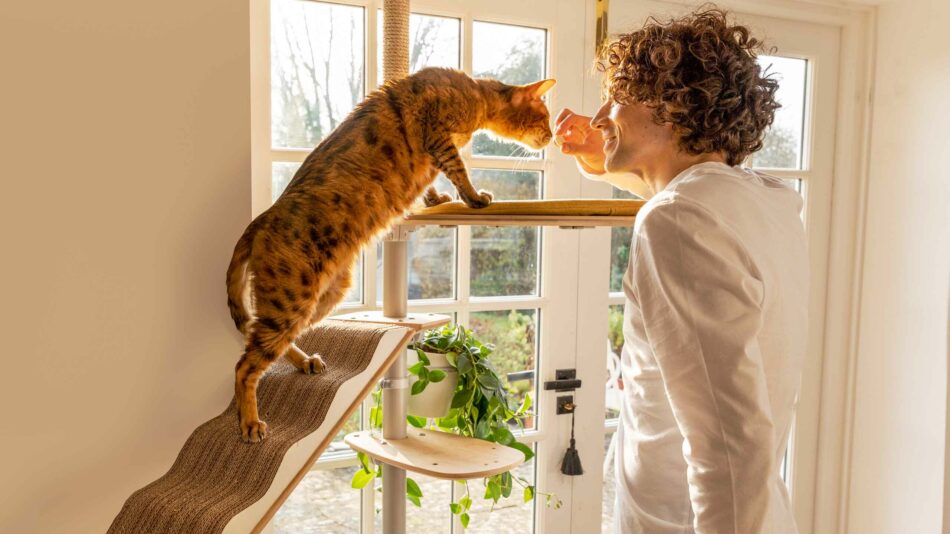
Why do cats go missing?
It’s no secret that cats are curious, and this curiosity creates wanderlust. In fact, cats are 11 times more likely to go missing than dogs. They’re independent, have a hunting drive, and if they aren’t spayed or neutered, will roam far and wide to find a mate. Here are the most common reasons felines find themselves too far from home.
Curiosity
Being inquisitive by nature, cats will pursue something that piques their interest. And sometimes, this curiosity carries them away from familiar territory. Chasing prey, investigating a noise or smell, or defending their territory against other cats are common reasons for felines to leave their usual perimeters.
Nervousness
Fireworks, car alarms, or other sudden, loud sounds can frighten cats into a frenzy that results in darting away. Cats will run until they feel safe or can no longer sense the threat, and will hide out until they feel that the coast is clear. But this frantic dash may find them in unfamiliar territory, making it more difficult for them to return home.
Moving
If you’ve moved recently or plan to in the future, keep a very close eye on your cat. It’s not uncommon for cats to try to return to familiar territory after the stress of relocating. There’s countless stories about cats traipsing miles upon miles back to previous residences, and this drive is rooted in their territorial nature. It takes several weeks for cats to settle into new homes and to “mark” their new territory as theirs.
Accidental Confinement
Felines are masters at finding secluded spaces. But unfortunately, sometimes their new favourite hiding spot may be in a less-than-ideal location. Storage sheds, garages, vehicles, and even cabinets or drawers are some common places that cats retreat to, only to find themselves locked in. This is especially common in the colder months when cats are seeking small, cosy spaces.
Theft
It’s a sad, but true reality that many cats are stolen — especially purebreeds. If you have a unique or sought after breed like a Ragdoll, Himalayan, Siamese, Scottish Fold, Persian, or Sphynx, they may be at an increased risk of being taken. And, some cats are accidentally “stolen” if they’re mistaken for being a stray that someone has found, or if they’re friendly enough to wander up to someone else’s home.
How to prevent your cats from becoming lost
Thankfully, there are ways you can help keep your cat close to home and increase the chances of locating them if they should get lost. From accessories to medical interventions, here’s how you can mitigate the risk of your cat going missing.
Catios
A Catio gives your cat space outside to roam and fulfill their drive to explore while keeping them close to home. The fully enclosed space protects them from other neighbourhood pets, and prevents them from wandering away from safety. Add Catio Tunnels to link a window of your home to the Catio, and give your feline instant access to their outdoor sanctuary.
Microchipping
Microchips aren’t a tracking device, but rather a form of permanent identification. They’re placed under the skin between the shoulder blades by a veterinary professional using a syringe and needle, similar to routine vaccinations. Once the microchip is registered into the database, its unique ID number will be linked to your contact information. And, when you link your cat’s microchip to Identibase, you’ll be able to report them as missing and update your contact information instantly — greatly improving the chances of a happy reunion.
As of June 2024, it’s required by law in the UK to microchip your cat by the time they are 20 weeks old.
Household awareness
Sometimes keeping your cat safe is as simple as making a plan with your household members to be on the lookout for your feline family member. Staying vigilant to close open doors and windows, being aware of where your cat is before leaving the house, and searching common hiding places together if your pet seems scarce are all easy ways to involve the entire family in your cat safety plan. Teach young children especially to close dresser drawers or cabinets right away before your cat has a chance to climb in.
Spaying and neutering
Spaying or neutering your cat has several health benefits, but it’s also very helpful in curbing their desire to roam. Cats will span miles to find mates, and intact indoor cats are known to yowl at the door or slip out at the opportune time to go on their search. And, intact cats are even more territorial, which results in more fight wounds.
Indoor entertainment
When your home is more exciting than the outside world, it makes going outside less tempting for your cat. Provide your cat with an Indoor Cat Tree or Switch LED Scratching Post for ultimate entertainment at their paw tips. And don’t forget a comfy Cat Bed for leisurely cat naps that occupy the majority of their schedule.
Tracking devices
A GPS tracking collar can give you real-time updates to your cat’s whereabouts. These should only be used in cats prone to escaping or roaming, as they need to be on non-breakaway collars to be the most effective. Some GPS trackers for cats are lightweight enough for cats to wear on the regular, but should be used with caution as they pose a risk of being snagged on fences, tree branches, or other elements during feline activity.
What do I do if my cat goes missing?
Despite your best efforts, determined felines may still find themselves lost. While this is an emotional and upsetting time, it’s important to remain calm and have a plan. Here’s what to do if your cat is missing:
- Check all of your cat’s usual hiding places, or any new places you may think of. Cats may find a new spot that suits them, and they’ll remain happily tucked away despite their owner’s increasingly frantic calls.
- Shake your cat’s favourite treats or food bowl. Sometimes this is all it takes to coax them out of a hiding spot.
- If you’re sure they aren’t in your home, log into Identibase or their microchip database and make sure your contact information is up to date, and report them as lost.
- Check with your neighbours, look at security camera footage around your home, and go for a walk to call your cat.
- If they still haven’t turned up, leave a familiar item on your front doorstep, like their bed or a favourite toy. The scent of home and familiarity can sometimes be enough to bring them back.
- Post on online groups or forums, and provide a recent photo of your cat for reference. Call local shelters, veterinary clinics, or rescue groups to see if anyone has brought in a cat that matches your description.
It’s also important to note that cats will often hide if they’re ill or in pain. If you find your feline hiding out and reluctant to leave their spot without an obvious cause, gently remove them and look them over for any injuries. For any cat that has been missing for more than a couple of hours, it’s a good idea to take them to your veterinarian for an exam. And if your cat is camped out in their litter box (especially males), call your veterinarian right away — this can be a sign of a urinary obstruction, which is a medical emergency.
Omlet and your cat
Cats may be more likely to go missing than other pets, but your cat doesn’t have to be a statistic. Invest in a Catio for cats that crave outdoor adventure, and keep them close to home. And, add fun elements inside like the Indoor Cat Tree or Switch LED Scratching Post to keep them entertained, and a supportive Cat Bed for optimal sleeping habits. With Omlet, you can rest easy knowing you’ve created safe and supportive surroundings that your cat would never dream of leaving.
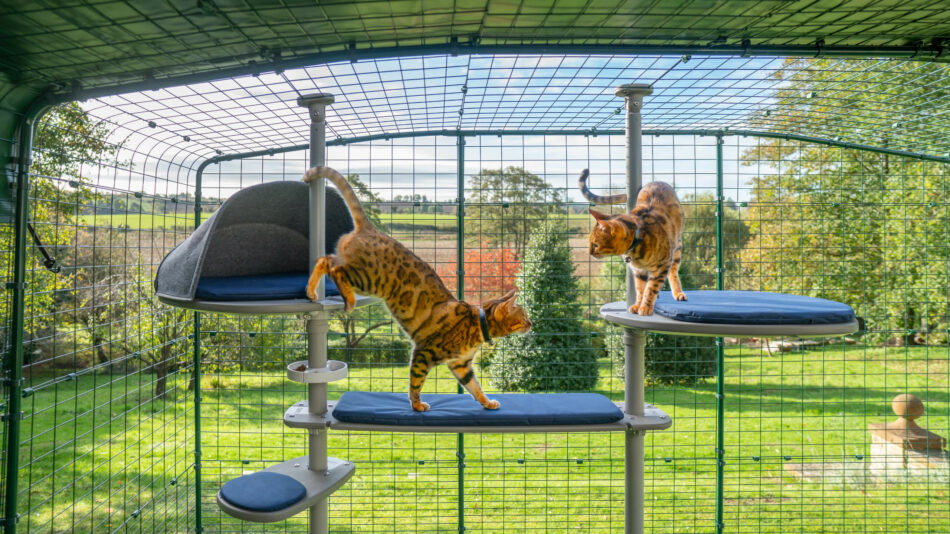

This entry was posted in Cats
Cats are mysterious and magnificent, and endlessly entertaining. But how much do you really know about the whiskered wonder curled up on your sofa? We’re pulling back the curtain with these fun facts about cats to shed light on some of the quirks, habits, and downright fascinating facets that make our feline friends so extraordinary. Some might surprise you, others you’ll recognise right away, and all will give you an even deeper appreciation of the cat in your life.
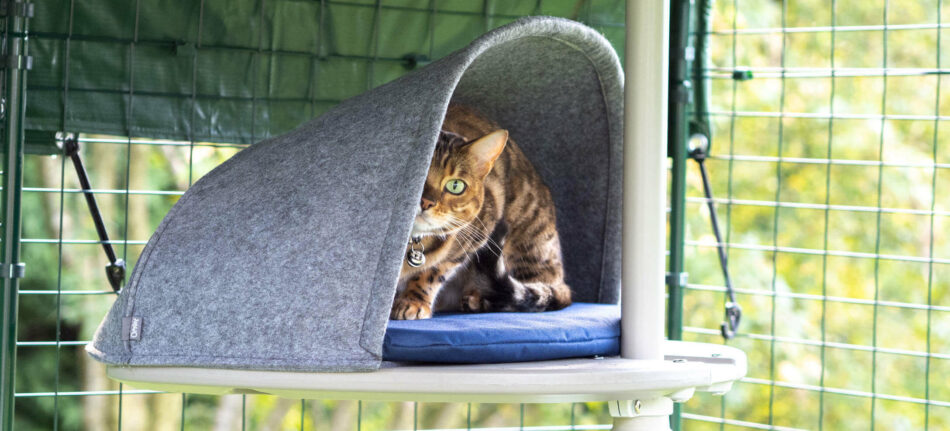
Fascinating feline facts
Understanding the quirks of cats does more than make you smile. It deepens the bond with your pet through the awareness of why they do what they do. The long naps, 3 a.m. zoomies, and head tilts when you talk to them all connect back to their instincts and biology. Here are some fun facts about cats that make them the remarkable creatures we adore.
Cats spend up to 70% of their lives sleeping
If your cat seems to spend most of their day snoozing, you aren’t imagining it. Cats are professional nappers, clocking up to 16-20 hours of snooze time a day. This instinct stems from their wild ancestors, who converged energy between bursts of hunting.
Cats are fast — deceptively so
Speaking of bursts of hunting, that seemingly lazy loaf on your sofa can reach speeds of up to 30 miles per hour in a sprint. Those sudden “zoomies” in the wee hours of the morning are a reminder of just how athletic cats really are.
Each cat’s nose print is unique
Just like human fingerprints, every cat’s nose carries a one-of-a-kind pattern. If cats had ID cards, they’d be stamped with a nose print instead of a fingerprint.
Whiskers aren’t just for looks
Whiskers (viberissae, if we’re being technical) are finely tuned sensory tools. They help cats judge the width of spaces, detect changes in air currents, and even gauge the approach of objects in the dark.
Purring: a built-in healing mechanism
Cats don’t just purr for comfort. Research suggests that the frequency of a cat’s purr — between 25 and 150 Hz — can stimulate tissue regeneration and promote healing in bones and muscles.
Cats can’t taste sweetness
Unlike humans (and dogs, who’ll happily swipe cake if given the chance), cats lack the receptors to taste sweet flavours. That’s why your cookie holds no appeal, though they’ll still paw at it out of curiosity.
Cats walk like camels and giraffes
If you watch closely, you’ll notice that cats move their right feet together, then their left feet. This efficient, smooth gait keeps cats stealthy and is shared only by camels and giraffes.
Their ears can swivel 180 degrees
Cats have 32 muscles in each ear, giving them extraordinary range of motion. This allows them to pinpoint sounds with incredible accuracy, which is an essential hunting skill — and also why your cat always seems to hear the treat bag even before you’ve opened it.
Cats have an extraordinary jump
A healthy adult cat can jump up to six times its body length in a single leap. That means your 10-pound house cat could clear a backyard fence or scale a countertop with each. This acrobatic ability comes from powerful hind leg muscles, and explains why high perches are so appealing to them.
Their tails are communication tools
Cats may not wag their tails like dogs, but they do use them to communicate. A tail held high is a signal of confidence, while a twitching tip usually indicates irritation or excitement. Understanding tail language can give you a window into your cat’s mood before they’ve made a sound.
Kneading is a lifelong comfort habit
When cats press their paws rhythmically into your lap or blanket, it’s a behaviour rooted in kittenhood, when they kneaded their mother to stimulate milk flow. Adult cats often continue the habit as a sign of comfort, security, and affection.
A cat’s meow is meant for humans
Adult cats rarely meow at each other; it’s a behaviour mostly reserved for communicating with humans. Over their centuries of domestication, cats developed this vocal “language” just for us.
How to use your new knowledge
Knowing these facts can change the way we care for cats. Recognising that they need vertical climbing space, safe hiding spots, and stimulating play enables us to create spaces to suit them. Their “odd” behaviours don’t have to be foreign — with some observation and understanding, you’ll be able to meet their needs in a way that keeps everyone happy.
Omlet and your cat
At Omlet, we design with your cat’s natural behaviours in mind. The Freestyle Cat Tree encourages climbing and scratching, while the Catio offers space to stalk and lounge in the fresh air. Pair these elements with our cozy Cat Beds, and you’ve got enrichment that fits perfectly with every fact you’ve learned about.
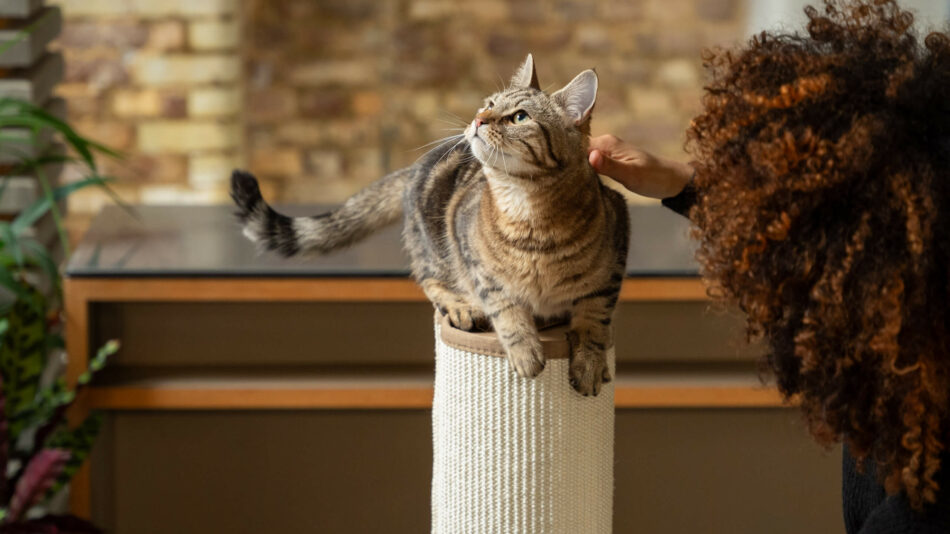

This entry was posted in Cats
Wondering why your cat meows and what they mean? Unlike their wild counterparts who rarely vocalise to each other, domestic cats have developed their meowing to communicate with humans. From greetings to requests for food, meows and other cat noises have many meanings. Here’s help in your quest to become fluent in feline.
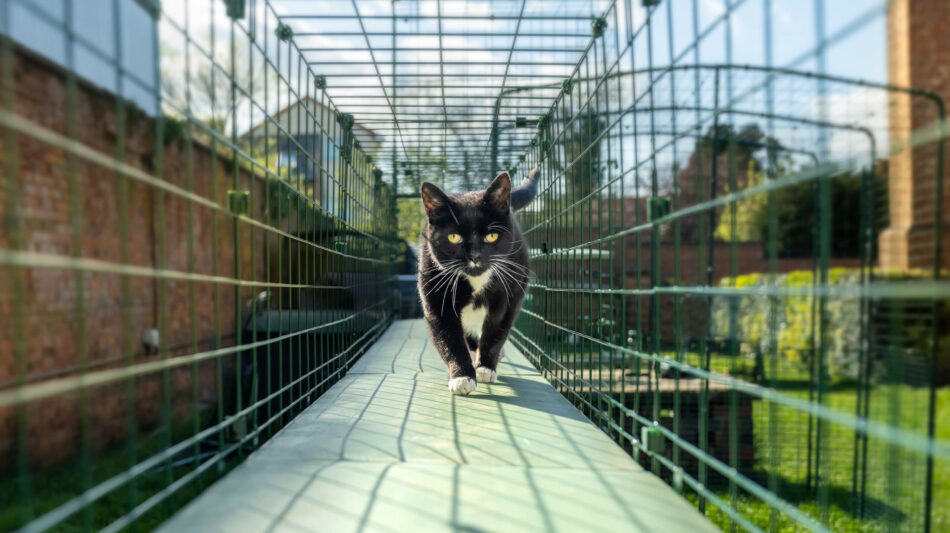
The cat’s meow: vocal clues
While cats communicate with each other through body language and scent, vocalisations are their go-to with humans. Each cat develops their own “voice,” complete with signature pitches, volumes, and even accents. Understanding different cat sound meanings helps you better care for your feline, and strengthens your bond in the process.
Here are some of the most common types of meows and what your cat may be trying to tell you, and how to respond in a way that will resonate with your cat.
Short meows: a friendly hello
A short, high-pitched meow is often a casual greeting. Think of this as your cat’s way of acknowledging your presence. You may hear this type of meow when you walk into a room, open a door, or return home after being away. It’s a lighthearted and friendly vocalisation, especially when accompanied by an upright tail and bright eyes.
Multiple meows: excited or demanding attention
If your cat greets you with a rapid series of meows, or even those that escalate in pitch or frequency, they’re likely trying to convey a sense of urgency. Excitement, impatience, or a demand for attention are some of the meanings behind these types of meows. You’re most likely to hear these around mealtimes, or when they’re encouraging you to follow them to a specific destination (like an empty food bowl).
Long, drawn out meow: unhappy or demanding
The drawn-out “meeeeeooooow” often speaks of frustration or a strong desire. Your cat is essentially wondering what has been taking you so long. This type of meow may be accompanied by pacing, tail swishing, or scratching at doors. If your cat seems distressed, check to see that they have food, water, and a clean litter box.
Chirps and trills: friendly and social
Trilling is a sweet, rolling sound often made with the mouth closed. It’s a sound mother cats use to call their kittens and is usually friendly and affectionate in nature. If your cat trills when they see you or when they’re approaching you, it’s one of the ways your cat shows they love you.
Chirping sounds like a mixture of a meow and a bird call, and is often heard when your cat sees prey outside. Birds, squirrels, or other small animals can bring out this hunting instinct in your cat. Chirping is a sign of excitement, but can also mean frustration at viewing prey through a window.
Caterwauling: mating or distress
This loud, keening sound is typically heard from intact male and female cats, and often signals mating behaviour. It can also be heard when cats are in discomfort, or from senior cats experiencing confusion. If your cat suddenly starts caterwauling, it’s worth having them examined by your veterinarian, especially if they’re spayed or neutered, or if it’s accompanied by odd behaviour.
Growling, hissing, and yowling
These sounds aren’t subtle. A growl or hiss signals fear, irritation, or a warning to back off. Yowling can be territorial or in response to pain. These types of vocalisations are usually more intense and require immediate attention to your cat’s environment, social dynamics, or health.
When might meowing be a problem?
While most meowing is perfectly normal and endearing, excessive or unusual vocalisation can be a sign that something is amiss. If you’re wondering “Why is my cat meowing so much?”, consider the following possibilities:
Illness or discomfort
Cats may vocalise more when they’re in pain, feeling nauseous, or dealing with a medical condition. Sudden changes in vocal behaviour should always prompt a vet visit.
Loneliness and boredom
Indoor cats that spend long hours alone may meow out of loneliness or boredom. This is especially common in social or high-energy breeds like Siamese cats.
Stress or anxiety
Changes in routine, moving houses, or adding new pets or people to your home can stress your cat. Increased vocalisations may be a cry for reassurance or a sign of anxiety during times of change.
How to respond to your cat’s meows
Understanding the meaning of cat noises is one thing, but responding in turn is another. Here are some ways to appropriately handle your cat’s vocalisations:
-
Assess and respond to needs: Check their food, water, litter box, or outside views.
-
Don’t reward demanding behaviour: If your cat meows insistently for food outside of mealtime, avoid giving in — otherwise, your cat will have you trained.
-
Talk back: Mimic your cat’s tone or engage with calm conversation. Sometimes your cat may just want to chat.
-
Redirect attention: Use cat scratchers, cat trees, or interactive playtime to shift their focus.
-
Rule out medical issues: Any sudden increase or decrease in vocalisation should be checked by a vet.
Omlet and your cat
At Omlet, we know that happy, healthy cats have a lot to say. That’s why we’ve created what you need to support their well-being and enrich their everyday lives. From cozy cat beds to indoor cat trees and outdoor Catios, our cat products keep your cat’s mind and body active. Whether your feline friend is a chatty companion or a quiet observer, we’ll help you create a home that allows them to be their full, expressive self.
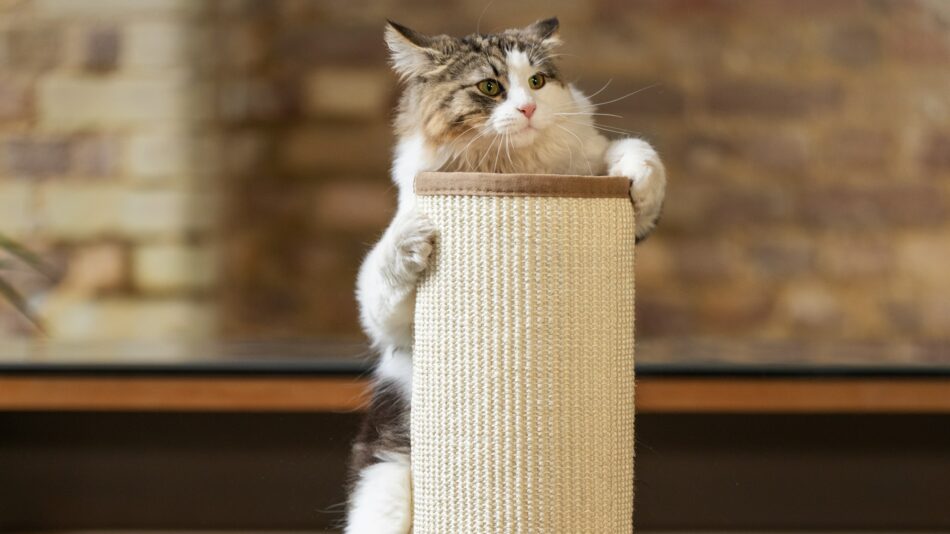

This entry was posted in Cats
For centuries, felines have enchanted humans with their enigmatic nature. While often perceived as independent and aloof, beneath their cool exterior lies a rich tapestry of instincts and desires. But what do cats love the most? Understanding what truly caters to cats can deepen the bond between them and their humans. Explore the various facets of a feline’s affections with these insights into their natural behaviours and preferences, and how to best replicate them in your home.
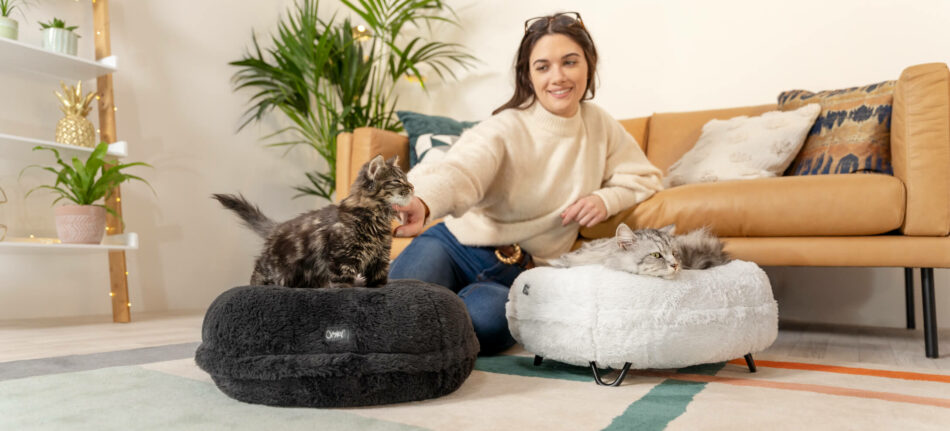
Feline favourites
It’s tough to pinpoint one single “favourite” thing for every cat (they’re far too unique for that), but there are some common themes that come to light when observing their natural behaviours. Cats share a close genetic connection with their cousins – think big cats like lions, leopards, and cougars – so that even our domesticated, indoor cats have insatiable urges that closely mirror behaviours from their wild counterparts. You’ve probably seen your feline exhibiting some, if not all, of these favourite pastimes.
Hunting
Toys for cats aren’t just fun; they ignite their hunting drive and provide essential mental and physical stimulation. Cats, from the biggest to the smallest are natural predators. Your lounging feline can flip the switch from purring contentment to focused predator in mere seconds. That’s why cats are drawn to toys that mimic prey, like those that move and have feathers or fur. Laser pointers or cat toys with lights are also a favourite, as they demand a good chase.
Scratching
Scratching is an important cat behaviour, and it serves multiple purposes:
- Sharpens their claws
- Stretches their muscles
- Marks their territory through scent glands in their paws
Sisal cat scratching posts are a favourite among felines because the material is durable, yet shreddable, which satisfies a cat’s natural urge to rake and tear. Providing a sturdy cat scratching post tall enough for your cat to fully extend and stretch is essential for curbing this craving – and for sparing your furniture.
Hide & sleep
Being predators, cats can feel vulnerable when they sleep. That’s why they often seek out secure, elevated, or enclosed spaces where they feel protected. This could be an indoor cat tree for them to climb or a supportive cat bed in a secluded place. These safe havens allow them to truly relax and feel like they’re in charge of their environment.
Routine
Cats are creatures of habit and thrive on predictability. Remember the time you rearranged the living room furniture and your cat held a grudge for a week? They still haven’t forgotten.
A consistent routine for feeding, playtime, and sleep can greatly reduce stress in your cat, and help them feel more secure. And their territory is also paramount; they’ll meticulously scent-mark their environment with their pheromones (that only they can smell) to establish boundaries and feel safe. It’s why cats are so offended by sudden changes to their surroundings, and any deviations to their normal should be introduced as gradually as possible.
Food
Food is another thing cats love. While a balanced diet is essential to their overall wellbeing, occasional treats can be a wonderful way to reinforce positive behaviour and strengthen your bond. Consider cat-specific treats like small pieces of cooked chicken, salmon, or commercial cat treats designed for your cat’s lifestage or dietary needs. Use treats during training sessions with your cat, or hide some around their favourite areas of your home for a fun hunting game. Just remember to introduce new foods slowly and in moderation to avoid any digestive upset.
How to convey love to your cat
Beyond satisfying their basic needs, there are many ways to convey a deep sense of love and dedication to keeping your cat happy. You might just be rewarded with displays of affection from your cat in return.
Cater to your cat
As mentioned, consistency reigns supreme with cats. Aim to set a predictable schedule each day, starting with their meals. Consistent mealtimes not only help regulate their digestion, but build trust in your cat. Your cat will quickly learn that you are the provider of delicious provisions, which really reinforces a positive relationship. You may also find your feline snuggling up to you during your downtime. Cats will quickly catch on to your own schedule, so try to sync up with theirs by reading a book or watching a movie around the same time together each day.
Appeal to their nature
Unlike dogs, who crave constant attention, cats truly appreciate having their boundaries respected. Forcing interaction can lead to stress and a strained relationship. Always let your cat come to you on their terms, and make sure they have an opportunity to retreat to their safe space if they feel overwhelmed. Giving them control over their environment is key to their comfort.
Think outside of the box at playtime
Boxes and cats often go hand in hand. And while many cats can certainly have a grand time with a piece of cardboard, it’s beneficial to think outside of the box. Engaging in playtime with your cat is an excellent way to bond, and to ensure they’re getting ample mental and physical stimulation. Grab a wand or feather teaser toy, or crumple up some paper into balls to ignite their predatory instincts. These play sessions should mimic an actual hunt, so be sure to allow them to catch their “prey” at the end.
Cat communication
Cats communicate their affection in subtle but profound ways. Learning to interpret these signals will go a long way in understanding your feline friend. So if you’re wondering, “do cats love their owners?” look out for these signs:
- Head Nuzzles/Headbutts (Bunting): When a cat gently rubs their head or cheek against you, they’re depositing their scent glands, essentially marking you as part of their “colony” or family. This is a strong sign of trust and affection.
- Slow Blinks (“Cat Kisses”): If a cat makes eye contact and slowly blinks at you, try slowly blinking back. This is a sign of deep trust and affection, indicating they feel safe and comfortable in your presence. It’s their way of saying, “I trust you.”
- Purring: While purring can signify various emotions, a soft, consistent purr often indicates contentment and happiness, especially when they’re being petted or are curled up near you. It’s the sound of pure bliss.
- Kneading (“Making Biscuits”): This rhythmic pushing of their paws, often accompanied by purring, is a leftover behaviour from kittenhood when they kneaded their mother to stimulate milk flow. In adult cats, it’s a sign of extreme comfort, contentment, and affection.
- Rubbing Against Legs: Similar to head bunting, rubbing against your legs is a way for cats to spread their scent and claim you as part of their territory. Congratulations: you’re officially theirs.
- Bringing “Gifts”: While sometimes unsettling (especially if it’s a real mouse), a cat bringing you a toy or even prey is a sign that they consider you part of their family and are sharing their “bounty” with you. It’s a macabre compliment, but a compliment nonetheless.
- Tail Position: A tail held high with a slight curl at the tip often indicates a happy, confident, and friendly cat. It’s like waving their own little flag of contentment.
Omlet and your cat
Every cat has a unique personality, blending their inherent instincts and individual experiences. But the fundamentals of feline happiness are consistent – which is why we’ve observed and interacted with cats extensively to create exactly what they crave. At Omlet, we know exactly what cats love the most. Our Cat Beds, Freestyle Cat Tree, and Switch Cat Scratcher have all been designed with feline instincts and preferences in mind to bring you and your cat closer than ever.
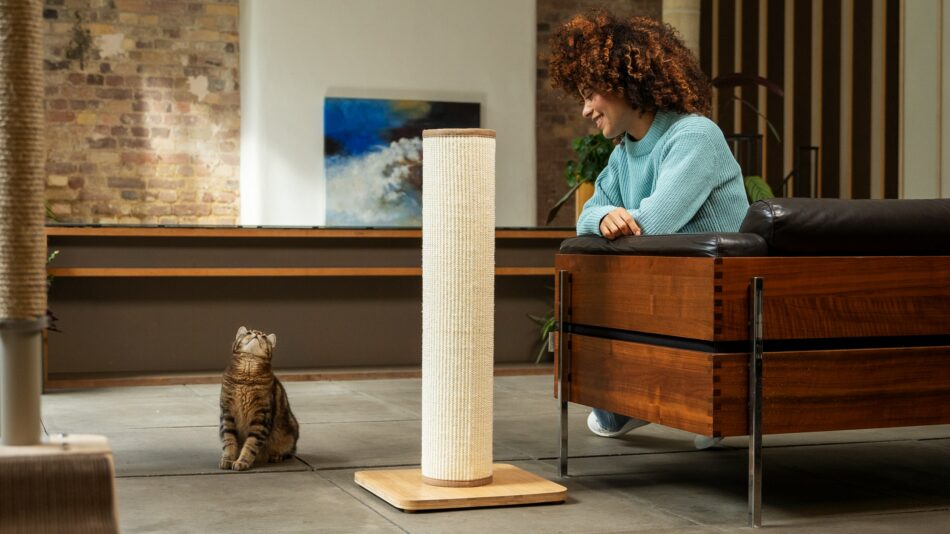

This entry was posted in Cats
Cats are enigmatic pets, and part of their allure is their curiosity and independence. But these personality traits can bring some challenges for their owners. In this indoor and outdoor cat safety guide, we’ll cover toxic plants, outdoor safety, and other essentials to help your feline live life to the fullest.
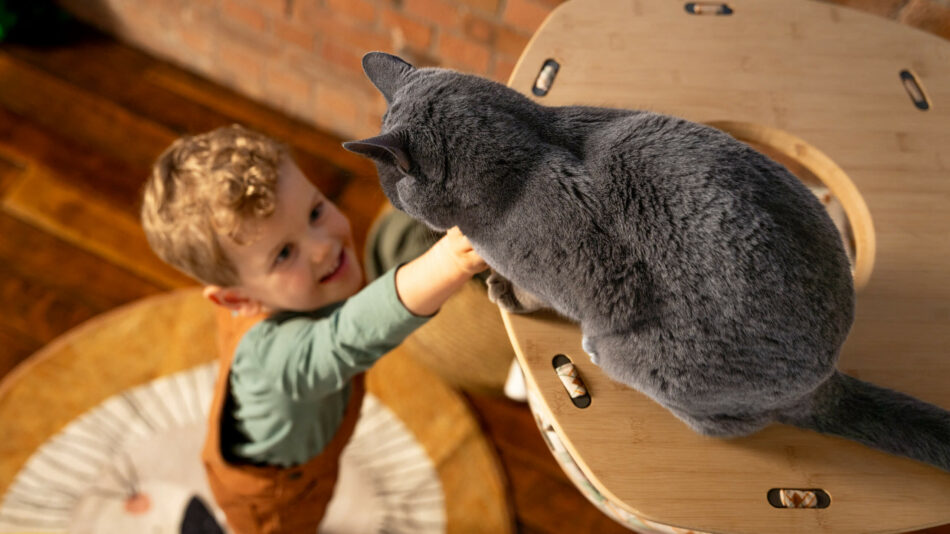
Safety struggles for cat owners
As any cat owner can attest: cats are curious by nature. And with this insatiable curiosity comes some head-scratching and adjusting on the part of their owners. Cats will readily nibble, swat, grab, or hunt anything that piques their interest. And as their owner, it’s your job to help keep them out of harm’s way. Here’s how to make your home feline-friendly — inside and out.
Indoor cat safety
While cats that are housed indoors are generally safer than those that spend all their time outside, there are still things in your home that can be potentially problematic. Here’s a list of common household items that can pose a risk to cats:
- Power cords
- Curtains or blinds
- String or rubber bands (if ingested)
- Button batteries
- Small toys or objects that can be swallowed
- Household cleaners
- Open flames (like candles or fireplaces)
- Certain essential oils
- Open windows (especially without screens)
- Mouse traps or bait
- Pesticides
Provide plenty of enrichment for your cat to play with to help deter them from getting into mischief. Indoor cat trees and cat scratchers are excellent, safe options for your feline to sink their claws into.
Toxic indoor plants
In addition to household items, there are several common indoor plants that are toxic to cats if ingested. These include:
- Lilies (extremely toxic, even in small amounts)
- Pothos
- Philodendron
- Aloe Vera
- Snake plant
- Sago palm
Choose safer varieties of house plants like spider plants, parlour palms, or Boston ferns. Artificial plants are a good substitute for their real counterparts, just be sure that your cat doesn’t chew on the faux foliage.
Outdoor cat safety
Cats that spend the majority of their time outside face more dangers than those kept indoors. The safest way to let your cat outside is to provide them with a fully-enclosed catio which allows them the freedom to roam while keeping them close to home. By keeping them in a designated safe area, you can avoid your cat coming into contact with common outdoor hazards, like:
- Antifreeze
- Fertiliser or lawn treatments
- Pesticides
- Predators (dogs in particular)
- Moving vehicles
- Extreme temperatures or weather conditions
It’s always safest for cats that spend time outdoors to do so in a fully enclosed area, or while under the supervision of their owners. Catio covers will help keep the sun and rain off of your cat while they play outside, keeping them shielded from the worst of the weather.
Toxic outdoor plants
Make sure your cat doesn’t have access to any areas that contain toxic plants. Common garden and landscaping plants that are toxic to cats include:
- Azaleas
- Rhododendrons
- Foxglove
- Oleander
- Tulips
- Daffodils
Always check a reliable source, like the ASPCA Toxic & Non-Toxic Plant List, before adding plants to your yard or garden.
Smart safety tactics for all cats
Whether your cat spends their time indoors or outdoors (or both), there are smart ways to keep them safe. A veterinarian is an indispensable ally as a cat-owner, and can provide these smart, life extending — and sometimes life-saving — safety measures:
- Spaying or neutering. This not only offers long-term health benefits, but also keeps cats closer to home by reducing their urge to roam. Spaying and neutering also diminishes marking and other hormone-driven behaviours, and prevents accidental litters.
- Microchipping. Essentially a permanent ID tag, a microchip (about the size of a grain of rice) is inserted by a veterinarian under the skin between your cat’s shoulder blades. If your cat gets lost, a veterinarian or shelter can scan for their microchip and get your contact information.
- Vaccinations and parasite prevention. These are especially important for cats that go outside, but all cats can be protected from preventable diseases by being vaccinated. Cats can also contract intestinal parasites and even heartworms along with fleas and ticks, so parasite prevention is also important.
It’s also a good idea to have a 24-hour emergency veterinary clinic’s number on hand for incidents that occur after-hours. If your cat is microchipped, be sure to keep any subscriptions or contact information up to date to ensure you can be notified if your cat is found.
Pet insurance may also be an option for your cat. Depending on the policy, their routine care and preventatives may be covered, along with a certain amount toward unexpected veterinary bills. Ask your veterinarian’s office about plans or companies they recommend.
Omlet and your cat
Every cat is unique, but their needs remain the same: an environment tailored to their nature. At Omlet, we believe in supporting their nature while providing you with easy to clean products that look great in your home. From our stylish Switch Cat Scratcher and customisable Indoor Cat Tree, to our safe and spacious Catio, our cat products are designed to delight owners and felines alike.
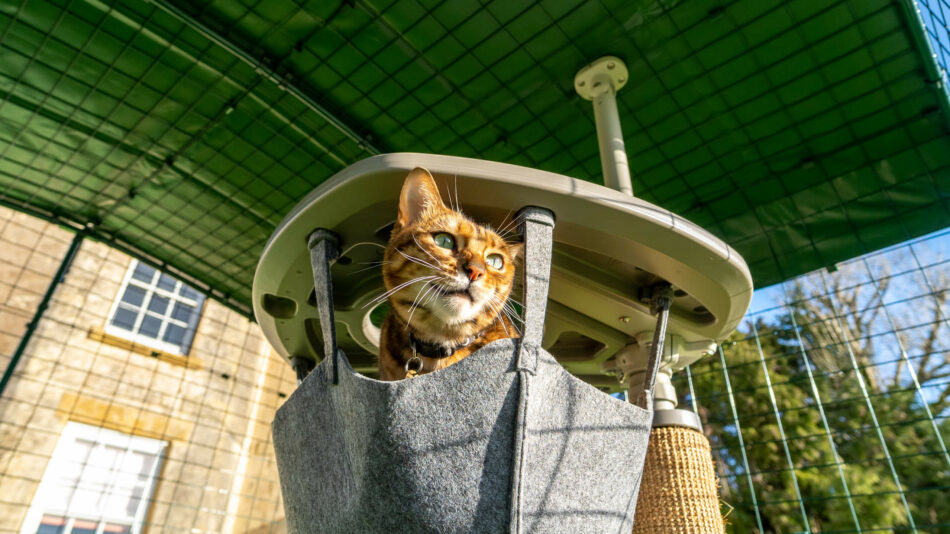

This entry was posted in Cats
It’s no secret that cats are opinionated, and there are 10 things humans do that cats hate. These feelings aren’t wielded as a personal vendetta against their owners — they’re just natural behaviours domesticated felines have inherited from their wild ancestors. So before you chalk up your cat’s attitude to quirky personality traits, see if some of your behaviours might be creating friction in your relationship with your feline.

Why are you the way you are? — Sincerely, Every Cat Owner
If you share your home with a feline, at some point you will inevitably ask why your cat does certain things. All cats are quirky — it’s part of why we love them. But a large reason for their unique behaviours is due to their close connection with their ancestry. You’ll notice cats still closely resemble cougars, lions, ocelots, bobcats, and other wild felines, while most dog breeds don’t share very many similarities in their appearance with wolves or coyotes. This is also why cats tend to be more aloof than dogs, and are more independent than canines.
Does this mean cats make bad pets? On the contrary — these attributes make cats loyal, loving companions once they’ve bonded with their owners. Connections between cats and humans run deep, spanning thousands of years. But to establish a lasting bond with your cat, you’ll need to understand their basic nature and avoid certain actions or behaviours that are off-putting to them. And while there are exceptions to every rule, here are 10 common ways humans interact with their cats that are actually offensive to felines.
Making loud noises around your cat
Cats have much better hearing than humans. This is a trait passed down from their wild cousins, and it serves them well in most circumstances. But their keen hearing also means that sudden or sustained loud noises can startle or grate on your cat’s nerves. Washing machines, loud conversations, blaring music, fireworks, parties, and yelling are all sounds that can stress your cat. Most cats will find a quiet place to wait out the commotion, so if you notice your cat hiding more than usual, take stock of the noise level in your home.
Aggressive petting
While dogs are known to enjoy an enthusiastic back scratch or belly rub, most cats prefer a more gentle approach. Heavy-handed patting, rapid scratching, or handling a cat’s tail, paws, or stomach will make some cats feel threatened. This can trigger cats to run, lash out with a well-aimed swat, or nip. Most cats also dislike being cuddled or hugged, which can also trigger similar stress reactions. Stick with gentle strokes to your cat’s fur, always going with the direction of their hair. Most cats will also welcome a gentle scratch under their chin or along the sides of their face.
Ignoring your cat
Not all cats crave attention — but when they do, it’s on their terms and in a manner of their choosing. Ignoring your cat when they’re demanding your attention can be a personal affront to them. If you notice your cat jumping into your lap, hovering around your hands, meowing at you, or laying across your work surfaces, they’re expecting attention. Many cat owners are no stranger to the phenomenon of having a demanding cat as a semi-permanent feature on their desk, keyboard, or lap, and it’s best to soak in the quality time while it’s their idea.
Bathing your cat
You may see tigers at the zoo play in water elements, but as a general rule, cats do not like water. In fact, they go to great lengths to avoid getting wet. A cat’s tongue is well-designed for keeping their coats clean, and the vast majority of cats won’t require an actual bath in their lifetime. So, resist the temptation to lather up your feline unless they’ve gotten into something too dangerous or sticky for them to clean off themselves.
Taking your cat for a car ride
Most cats do not enjoy riding in the car. While your family dog may happily bound into the car, their tongue lolling out the side of their mouth through an open window — your cat has very different opinions of moving vehicles. Cats are prone to motion sickness, and the combination of movement, noise, and smells will stress them. Limit car rides with your cat to necessary trips like vet visits or moving to a new home.
Adding new pets to the family
Some cats enjoy the company of others, but generally speaking, cats will be just fine as the sole pet in a home. Cats are territorial, and are perfectly content having a house to themselves. Bringing a new pet home, whether it’s another cat, a dog, or even a small pet, can create stress for your feline. Always introduce new pets slowly, and watch your cat’s reaction closely. Some cats can cohabitate with others, while others will always prefer to be the sole apple of their owner’s eye.
Rearranging your home
Moving furniture around your home may be feng shui, but rather than having a calming effect on your cat, it can be quite the opposite. Cats are very in tune with their surroundings and even small changes can cause them to stress. This is especially true if you move their belongings to a different part of the house, or if you’re moving to a new home. Give your cat plenty of time to adjust to changes, no matter how small they may be.
Leaving the litter box dirty
Cats are very concerned with being clean. They are meticulous with their coats, prefer pristine surroundings, and despise a dirty litter box. Your cat will avoid using a litter box that’s too full or smelly, which is one of the main reasons for cats seeking alternative options in your home. The desire to cover their eliminations again stems from nature — they want to hide their presence from other animals. Clean your cat’s litter box daily, and don’t use scented litter or deodorisers, as these can be off-putting or too strong for your cat’s keen sense of smell.
Physical discipline
Negative reinforcement in the form of physical discipline doesn’t communicate to cats. Swatting your cat for unwanted behaviours is a sure way to break their trust and damage your relationship with them. By nature, cats are dominant, independent animals, which makes them reactive to physical discipline. If you see your cat doing something less than desirable, break their attention by clapping your hands, whistling, or speaking sternly to them. Redirect them to a desired behaviour, and reward them with a pet or a treat.
Not giving your cat enough space
A cat bed in a secluded corner or a cat tree with multiple levels of escape is what all cats crave. While most cats will happily cohabitate with their humans, they need their own space to retreat to throughout the day. Cats are solitary animals by nature, so they need a quiet refuge from human routines and activities. If you see your cat napping in their space, observe and appreciate them from a distance — they’ll come to you when they’re ready.
Omlet and your cat
Cats are intriguing and mysterious pets that grace the homes of millions worldwide. Their popularity is second only to dogs, speaking to their allure and delightful companionship. Our cat products speak to their nature, and encourage natural behaviors to help your cats live healthier, happier lives. From cat trees and scratchers to cat litter boxes and cat beds, we have everything your feline needs to feel their best.
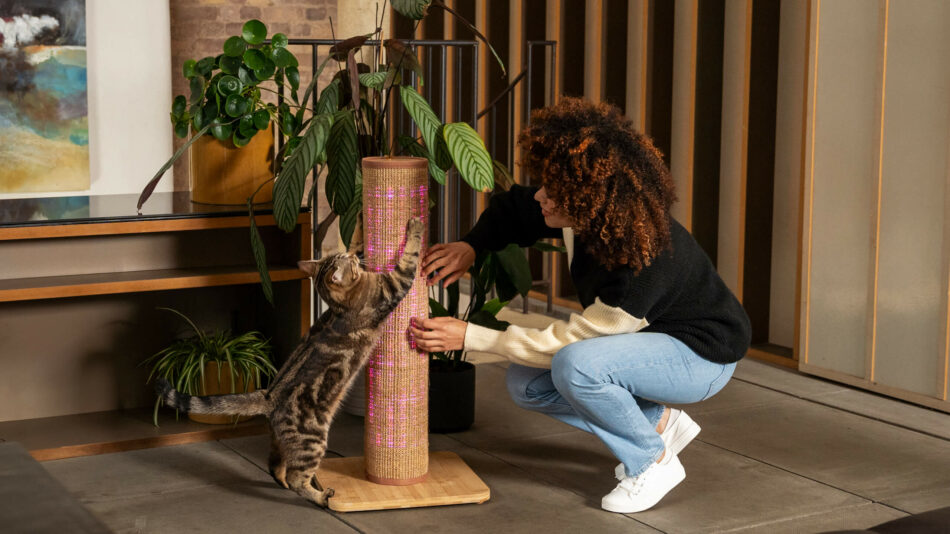

This entry was posted in Cats
Wondering what your cat thinks of you? These 8 signs your cat loves you can clue you in on your cat’s level of affection and loyalty toward you. Even if your feline friend isn’t forthcoming with their feelings, they’re likely showing you their devotion in subtle ways. Learn how to recognize your cat’s love language, and what to do to strengthen your bond with them.

Do cats show affection to their humans?
Cats are excellent at masking any sign of weakness, which can include pain, illness, or displays of trust and acceptance. Because of this, some cats are more reserved when it comes to public displays of affection to their humans — but that doesn’t mean they don’t adore you. In fact, some wear their positive emotions on their metaphorical sleeves, communicating their cat love language loud and clear.
Are you feeling the feline love? See if your cat is displaying these behaviors.
This vocalization is one that most people most often associate with happy cats. The soothing rumbling sound your cat emits is a sign of contentment and happiness. But not all cats purr loud enough to hear — sometimes you may feel your cat’s throat vibrating while you scratch under their chin, or if their head is resting on you. No matter the volume, a relaxed cat that’s purring is saying “I’m happy and content with you.”
Being close cousins of their wild counterparts, cats are usually on alert for danger. When your cat chooses to nap on or near you, it’s a sign that they trust you to keep them safe. If your feline follows you to bed each night, it’s a sign of devotion and desire to be with you. So the next time your cat hops into your lap and lays down on your hands, keyboard, or other work surface, just remember that they’re showing you the love.
Sometimes referred to as “making biscuits”, this action is a rhythmic massaging motion that cats do with their front feet when they are comfortable and content. Kneading starts during kitten-hood while nursing on their mother, and some cats carry this behaviour with them as they get older. If your cat gives you or the surface their standing on a gentle massage when you give them attention, they’re feeling calm and relaxed.
Headbutting or cheek-rubbing is your cat’s way of saying “be mine.” Cats emit pheromones through glands near their cheeks and chin that they use to claim their territory. This “marking” won’t leave any noticeable scents or signs to a human, but your cat will be able to recognise what they’ve designated as theirs. To be headbutted by a cat is the equivalent of making it into their inner circle — the acknowledgement of being one of their own.
Cats show affection to each other by licking or grooming one another — and this can extend to their humans. Try placing your hand near your cat while they’re relaxed and grooming themselves. If your cat licks you or allows you to brush them, it’s a sign of trust and acceptance.
For predators like cats, showing their underside is the ultimate display of trust. This vulnerable position is reserved for other animals or humans that they are totally at ease around. But don’t be so quick to pet your cat’s belly — this display shows that they’re comfortable enough around you to reveal their most vulnerable area, but it isn’t an invitation to touch them. Some cats will react negatively if their stomach is touched.
If you want to try to give your cat a belly rub, do so slowly, taking note of your cat’s reaction. Some cats will allow their humans to rub their abdomen, while others will instinctively react to physical contact.
-
Eye contact and slow blinking
Eye contact from your cat is another show of adoration. Cats will often stare into the eyes of humans they love and trust. If you’re rewarded with a slow blink or half closed eyes from your cat, you should feel even more honored. In fact, this is often considered the feline version of a kiss. Try giving your cat a slow blink back to see if they’ll repeat the gesture.
This one may not be a favourite among cat owners, as it usually involves a carcass of some sort, but it’s your cat’s way of bringing you flowers or chocolates. Being hunters at heart, your cat may reward your love for them with remains of their latest prey like rodents or insects. While somewhat revolting to us, a cat that’s proud of their human will bring them gifts. If you have a cat that’s strictly indoors, you may be rewarded with “dead” toys or other household items that your mighty hunter has vanquished.
What if my cat doesn’t do any of these things?
If your cat isn’t into PDA, that doesn’t necessarily mean they are unhappy in their home or with you. Some felines are much more reserved when it comes to their feelings, so you may need to look for more subtle signs that they’re content. Other signs of healthy, happy cats include:
- Napping out in the open, or in areas where humans frequent
- Meowing at you
- Following you
- Tail language like “rattling”, a curved C shape at the tip, or wrapping their tail around you
- Tilting their chin up while being pet
If you still don’t notice any of these signs of happiness from your cat, it could be that they’re not comfortable in their home, or are sick or injured. This is especially true if your cat hides constantly. If your cat is new to your family, give them plenty of time to adjust. For some cats, this can take a matter of hours or days, while other cats may take weeks or even months to fully come out of their shells.
Call your cat’s veterinarian if you suspect any illness or injuries. Cats are excellent at hiding sickness and pain, and it can be difficult to pinpoint what may be causing them distress without a medical exam or testing. This is especially important if you have a male cat that hides in the litter box for extended periods of time, as it may be indicative of a urinary blockage, which is a medical emergency.
Omlet and your cat
At Omlet, we invent ways to build a deeper bond with your cat. Our cat products like the Freestyle Indoor Cat Tree, Switch Scratching Post and Cat Litter Box were all designed to incorporate your cat’s every day accessories into your life. These multipurpose elements bring you and your cat closer than ever, ensuring a lifetime of love and comfortable companionship.
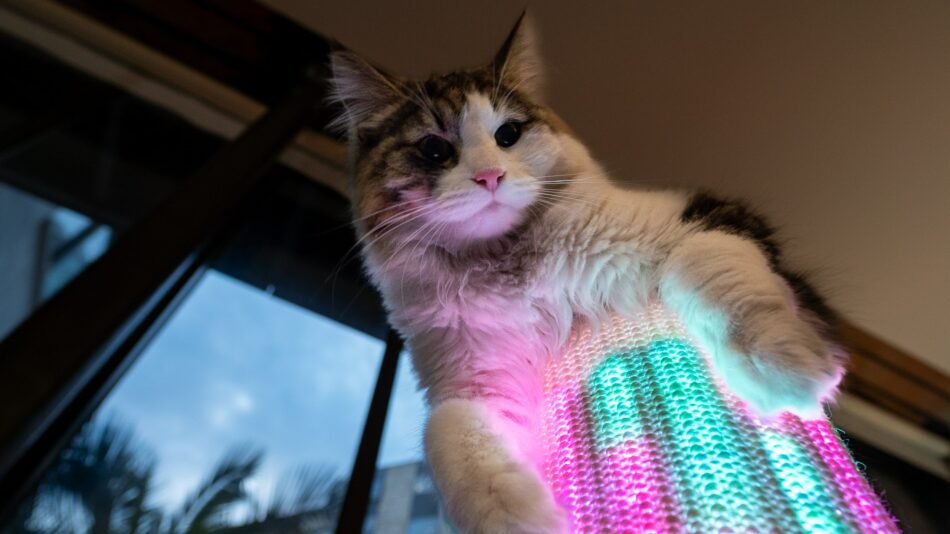

This entry was posted in Cats
If you’re wondering how to feel your cat entertained in winter, you’re not alone. Cat naps are a given under normal circumstances, but especially when the temperatures plummet and the sunlight is in short supply. This makes it even more important to fill your cat’s waking hours with engaging activities to help keep them fit and active. Here are some ideas to help your cats keep their minds sharp and their bodies moving.
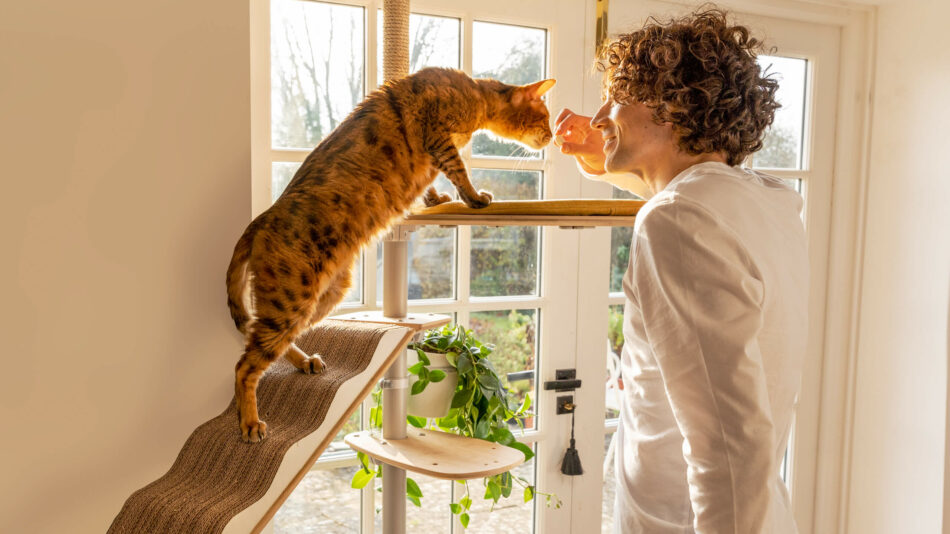
Cool cat characteristics
When winter sets in, you may notice your cats making themselves scarce. You aren’t imagining this — in fact, your feline will be seeking out cozy cat napping spots throughout your house for extended periods of time. Like us, your cat is drawn to warm sleeping spots as the temperatures drop and the daylight dwindles.
But just because they become more dormant doesn’t mean you shouldn’t encourage your cat to move. Keeping your cats active during the winter is just as important as any other time of the year. So how do you keep your cat’s interest piqued when they seem to only have slumber on their mind?
Appealing to your cats’ natural instincts and behaviours is one of the best ways to keep them entertained during the winter months. Getting them engaged in favourite activities like scathing, climbing, and even snoozing on a respectable schedule, will help keep their minds and bodies active.
Feline flexibility
Cats have flexible bodies and curious minds by design, which is why creative exercise and stretching opportunities are critical to their overall wellbeing. An Indoor Cat Tree is one of the best ways to appeal to all of your cat’s behaviours. With places to stretch, scratch, snack, and snooze, it checks all of your feline’s favourite boxes. Create custom levels of exciting exploration for your cats, and incorporate hammock beds or padded platforms for convenient catnapping.
Scratch it out
Most cat owners know that a scratching post is a staple in a feline-friendly household. But not all cat scratchers are created equally. In fact, many cat scratchers aren’t tall or stable enough for cats to reach their full scratching and stretching potential. Omlet’s Switch Cat Scratching Post is 50% taller than the average cat, with a topple-proof design to keep up with even the most enthusiastic scratchers. And, with 1,200 light modes and an integrated Bluetooth speaker, it’ll get you and your cat off the couch and warmed up during your own private disco.
Get your cat cozy
Napping is essential to cats by nature. On average, cats spend 12-16 a day sleeping. But all of this snooze-time doesn’t mean they’re lazy. In fact, cats sleep this much because they exert so much energy hunting, exploring, and playing during their waking hours.
The lower temperatures of winter prompt more sleep from your cats because of the stillness in the world around them — earlier human bedtimes, less wildlife activity to observe, and fewer daylight hours all signal your cats to nap more. But quality sleep is just as important as quantity. Give your cat a luxurious cat bed to sink into for restful, rejuvenating sleep. With refreshing naps, your cats will be ready for other indoor activities.
Don’t forget to play
Incorporating playtime into your cat’s daily routine will help them shake off their sleepiness. Refresh your cat’s toy stash with new offerings, and stock up on healthy treats to reward their efforts. Hide catnip infused toys for a fun scavenger hunt, or use toys with motion or enticing attachments to activate your cat’s hunting mode. Spending 15-20 minutes a day playing with your cat will warm their muscles and your heart — a true win-win.
What if my cat gets bored?
Cats are curious animals, and boredom does not become them. Bored cats may display less-than-desirable behaviors, and may even become depressed. Winter is prime time for cats to become bored — especially those that are spending more time indoors than they’re accustomed to. Signs that your cat is bored in their environment include:
- Inappropriate urination or scratching
- Hiding for extending periods of time
- Excessive meowing
- Changes in grooming habits, such as over grooming
- Weight gain
These can also be signs of medical conditions, so it’s always best to have your cat evaluated by a veterinarian if you notice any changes in their behaviour or appearance. If your cat has a clean bill of health, they’re likely exhibiting the effects of boredom.
Omlet and your cats
With supportive elements in your home that cater to your cat’s nature, you can turn your attention to choosing your next movie marathon with your favourite feline couch companion. Our indoor cat trees, cat scratching posts, and cat beds are perfect for creating an environment your cat will crave. So stock up on indoor fun this season, and keep your cat entertained all year long.
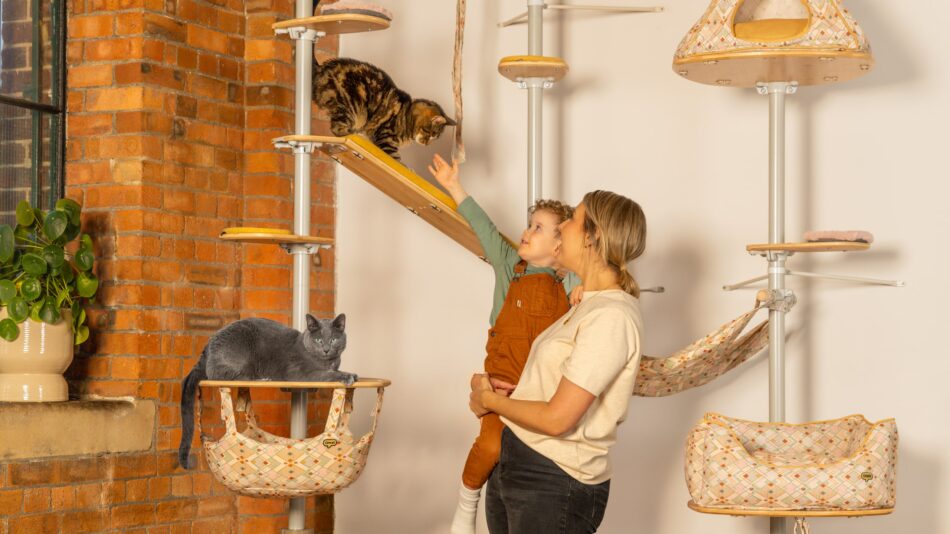

This entry was posted in Cats
In the workshop with Charlie
With winter drawing in, we found a quiet corner to catch up with product engineer Charlie, who led the design team on the Switch. We’re pretty obsessed with our disco dancing cat scratcher – not just because we get to watch Olive trying to take it down like a ninja, but because it adds serious vibes to the office now it’s dark by 4pm. Perfect time to talk about how and why it came to be…

What exactly is the Switch?
It’s a really sturdy, sustainable cat scratcher with an internal LED system. The system has 12 core patterns with 6 different colourways, and settings that let you adjust the brightness and speed. So, within each pattern, you can keep changing the program to make it randomized and less predictable.
How would you say it differs from other products on the market?
I think it’s the merging of a laser pointer and a scratcher. There’s a whole thing with cats, that they won’t necessarily use the scratchers and toys you get them. Cats don’t always play ball. But the Switch is an enhancement – there’s an added incentive to scratch and to play.
You mentioned sustainable? Why so?
We made the scratchable materials removable. All scratchers will inevitably get destroyed, but replacing just the scratching sleeve means the base of the product is preserved. The market norm is, something gets knackered, then just ends up in landfill. The Switch is different.
The base itself is bamboo – as a material it’s fast growing, but it’s incredibly hard wearing and scratch resistant due to the density, so it stays looking good – it has a lovely natural aesthetic too.
Why do you think aesthetic matters in a cat scratcher?
A big part of Omlet design is designing pet products that you want to have in your garden or your home, rather than something that gets hidden, or kicked to the corner of a utility room. Because if we can create products your pet will enjoy and that you actually want in your living space, it brings you and your pet closer, enabling you to spend time together.

What other materials did you use?
We chose sisal for the sleeves. It’s a natural material made from the agave plant. You dry it out and mat the fibres together and it’s really hard wearing. It’s used quite a lot in carpets and rugs and ropes, so it’s a natural choice. The trims and thread are all cotton – so the sleeves are fully biodegradable. This was a big factor for us, as the sleeves are designed to be shredded by cats’ claws and replaced, so we needed to use a fabric that was sustainable.
Another factor was finding a material that cats would enjoy scratching. In nature, cats would use tree bark, so we chose a heavy texture to provide extra sensory stimulation and replicate that deep groove.
Yes, I suppose not many people have room for a tree in their living room…
No. But size is a really important factor for an effective cat scratcher. Because you want to ensure enough height to allow the cat to stretch to their full height. Part of the benefits of scratching are stretching and lengthening the muscles, which releases endorphins and helps the cat relax. The technical term is stropping. So then you have to consider stability, because a cat is not going to feel comfortable doing this if the post doesn’t feel sturdy enough to bear their weight as they lean in and scratch downwards. If they try, but end up knocking the post over, this could scare them and be a deterrent.
So how did you tackle that?
Well, it needs to be heavy, but shipping heavy items has a higher environmental cost. So we developed an anti topple design to lower the centre of gravity within the post itself, which can be filled with water or sand or gravel by the customer when they set it up. It’s better to add the weight at the end destination, because even though in terms of shipping, it wouldn’t cost us any more, it would burn more fuel in transport.
What other practical design elements did you have to consider?
Because sisal’s a natural material, it has some stretch and is never perfectly uniform. So we created an expandable core to tension the sisal sleeve, which gives the cat a really satisfying scratch. The mechanism has two wedge features, at the top and bottom, that you can simply tighten, forcing the core outwards for a taut fit.
Unlike the sleeves, the core and the base are both designed to last forever, which is why we looked at the best material for purpose. In the case of the base, that is bamboo, and the core it’s ABS, a durable thermoplastic polymer which is rigid and scratch resistant.
Our methodology is a conscious use of plastic as part of good, lasting design. If it’s the best material for the job and is going to be long lasting, then it’s the sustainable choice.
Tell me more about those disco lights.
So, we’ve got a silicon coating on the strips, which protects them. Then, they are recessed into the core and so are protected by not being in contact with the surface.
Connectors then thread through, and once they’re connected, they feed to the controller, where the PCB is housed.
The PC what now?
The electronic board. At one end the lights – which are LED, with a low power consumption – connect to the controller component, then infra red signals let the customer control the settings – so it works like a TV remote.
Well that’s the technical bit. How about the disco bit?
There are some really fun light modes. There’s the barbers pole design – that’s great. It’s instantly recognizable. The snake inspired gaming one is really nostalgic and retro. The pinpoint and the whackamole are great for cat engagement. The fade ones are nice for mood lighting. The rainbow setting is fun, it looks really cool. There’s actually a disco one, which is great for a party! The rain design is inspired by water droplets – it’s tranquil and sets a nice vibe.
I think some are more appealing to cats, and some to humans, but all to both in greater or lesser part. And that’s important, because it’s essentially a piece of furniture – it’s a genuinely nice addition to your room that supports time together.

How did you test it?
We did lots of trials – funnily enough our customers with cats and dogs found their dogs liked it too! Then, as with all our products, we work with our in-house animal teams and spend lots of time observing their interactions with our designs. The Omlet cats have been around the Switch for ages, and they still play with it. Olive has a playful nature and really enjoys it. Fluffy will use it to scratch mostly, and is happiest looking down on us all from the Freestyle cat tree. Then there’s Nigel. He’s a real personality – he lost an eye in a fight in his youth and has a crooked tail. Nowadays, he prefers to kick back and keep his remaining watchful eye on the boisterous youngsters.
How do you think the Switch reflects Omlet’s design philosophy?
I’ve been at Omlet for almost 7 years, and I see various synergies with the way we designed the Switch and other products. For starters, as with all our products, the Switch has multiple user cases – so you’re always designing for the pet and the person who’s buying, who may not be the person who’s the end user. It’s multifaceted in terms of users, which makes it interesting.
What do you enjoy most about that aspect?
Probably the animals – they’re always fun. I’ve done a lot of work on our cat products, and I enjoy their contrariness. Then there’s the fact they move in a three dimensional space: they climb, so that’s really interesting. They’re not compliant, they’re a bit trickier to understand, which makes them a bit of a puzzle. It’s a challenge but we’ve risen to it! The Switch is as engaging a cat scratcher – and entertainment system – as we can engineer… Until we have our next big idea!


This entry was posted in Cats
When it comes to our feline friends, a happy cat is a healthy, well-cared-for, and entertained cat. Creating an environment where your cat can thrive involves more than just food and water—it’s about providing the right kind of enrichment, love, and care. Join us as we break down everything you need to keep your cat purring with joy, from the basics of enrichment to essential health tips, and all the Omlet products that will help you both.
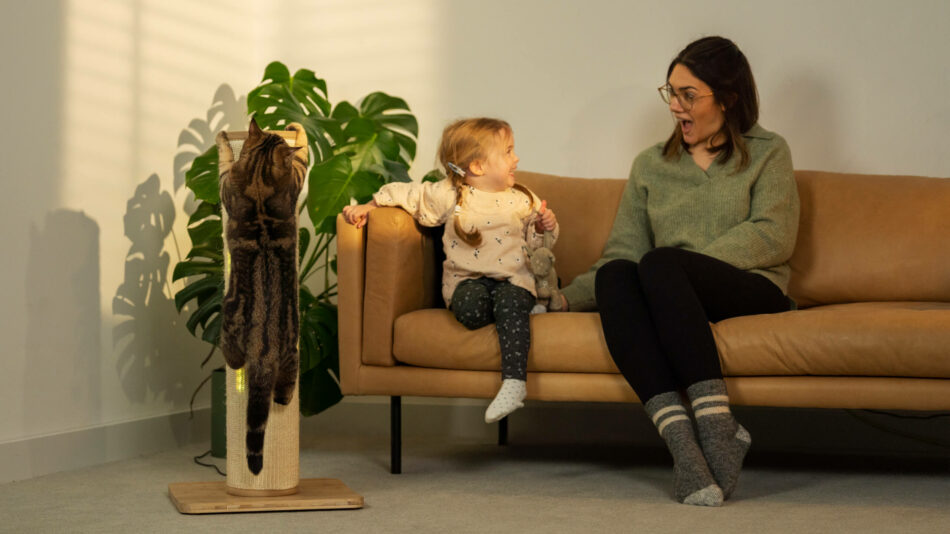
What is cat enrichment?
Enrichment for cats refers to providing stimulating activities and an environment that encourages their natural behaviours, such as climbing, scratching, hunting, and lounging. Think of enrichment as a way to bring out your cat’s inner tiger, even if they’re a laid-back indoor kitty. It’s about giving them outlets to express their instincts while keeping them engaged mentally and physically.
When cats lack stimulation, they can become bored, which often leads to undesirable behaviours like scratching furniture, overeating, or becoming overly anxious or withdrawn. By incorporating a variety of enrichment tools into their daily routine, you can ensure they stay curious, active, and content.
Why do cats need enrichment?
While it might seem like cats are naturally content lounging all day, they actually require a good deal of mental and physical stimulation to stay happy. In the wild, cats spend much of their time exploring, hunting, and climbing. Our domesticated cats still have those same instincts—they just need the right environment to express them.
Enrichment is especially important for indoor cats who may not have the same opportunities to explore as their outdoor counterparts. An enriched environment allows them to stay engaged, reduce stress, and maintain a healthy lifestyle, which leads to a longer, happier life.
Health tips for a happy cat
Beyond providing a stimulating environment, a happy cat needs love and care from their human companions. This is where care measures, such as vet check-ups and maintaining a good diet, come into play to ensure your cat’s physical and emotional well-being.
Health check-ups: Cats are excellent at hiding discomfort, so regular vet visits are essential. Even if your cat seems fine, routine check-ups can catch potential issues early, like dental problems, weight changes, or joint pain.
Balanced diet: What your cat eats plays a major role in their overall health. Consult with your vet to make sure you’re providing the right mix of nutrients and consider portion control to prevent overeating. You can also incorporate enrichment during mealtime by using puzzle feeders or treat-dispensing toys that encourage your cat to “hunt” for their food.
Interactive play: Cats need daily playtime to stay physically active and mentally sharp. Laser pointers, feather toys, and interactive puzzles are great options to keep your cat entertained. Play also strengthens the bond between you and your cat, making them feel loved and secure.
How can you provide the best for your cat?
When it comes to providing the best for your cat, we know that you want reliable designs that speak to your cat’s curiosity and health. At Omlet, we curate many cat products, from comfortable beds to exciting climbing trees, that can help you create the ultimate happy space for your feline friend:
- Cat Beds
Every cat deserves a cozy spot to call their own. Whether it’s a warm bed for a midday nap or a plush hideaway for a good night’s sleep, a well-chosen bed can make all the difference in your cat’s comfort. Omlet’s stylish and comfortable Maya Donut cat beds are designed with your pet’s needs in mind, offering superior support and durability.
- Freestyle Indoor Cat Climbing Tree
Cats love to climb, and the Freestyle Indoor Cat Climbing Tree lets them indulge in this natural behaviour safely indoors. This customizable tree provides multiple levels for your cat to explore, scratch, and perch on, giving them a sense of territory and adventure without leaving the house. It’s also great for multiple-cat households where territorial dynamics are at play.
- Switch LED Cat Scratching Post
Scratching is more than just a habit for cats—it’s essential for their physical and mental well-being. The Switch LED Cat Scratching Post not only satisfies your cat’s need to scratch but also adds an element of fun with interactive LED lights. It’s an excellent way to keep your furniture safe while ensuring your cat stays entertained and active.
- Catio Outdoor Cat Run with Catio Tunnels
If your cat loves the outdoors but you worry about their safety, a Catio Outdoor Cat Run is the ideal solution. Omlet’s Catio runs are spacious and secure, allowing your cat to enjoy fresh air, sunshine, and the sights and sounds of nature without the risks that come with free roaming. You can even add Catio Tunnels that connect directly to your house, giving your cat the freedom to move between their indoor haven and their outdoor playground with ease.
- Cat Litter Box
A clean and comfortable litter box is a must-have for every cat household. Omlet’s litter boxes are designed for both function and style, making them easy to clean while blending seamlessly into your home decor. Plus, our boxes come with odor control features, ensuring your home stays fresh and your cat has a hygienic space for their bathroom needs.
Omlet and your cat
At Omlet, we believe the bond between you and your cat is truly special, and we’re committed to creating products that make both of you happy. Our thoughtfully designed items, like the Freestyle Indoor Cat Climbing Tree, cozy and supportive cat beds, and Switch LED Cat Scratching Post, are ingeniously created to enrich your cat’s life while enhancing your connection with them. This Black Friday, celebrate the unique joy of life with your feline friend by giving them the best in comfort, care, and entertainment with Omlet’s pet products.
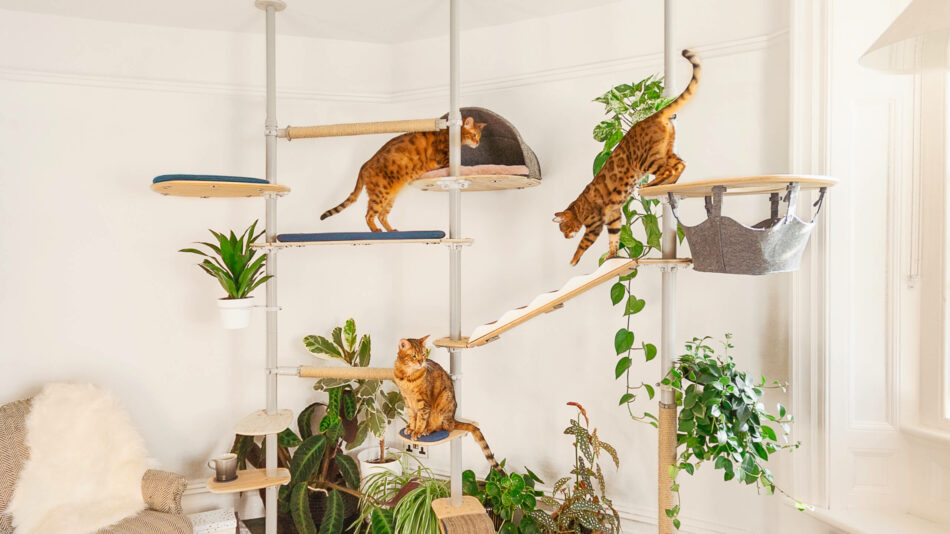

This entry was posted in Cats
As the seasons shift, so do the needs of our furry companions. Whether you’re a dog lover, a cat enthusiast, or both, you may notice that your pet’s habits and preferences evolve with the changing weather. From chilly mornings to muddy paws, darker days to cosy nights, adapting to these changes can help your pets remain comfortable and happy all year round. Let’s explore the ways dogs and cats respond to seasonal changes and share practical tips on how to keep them thriving no matter the weather.
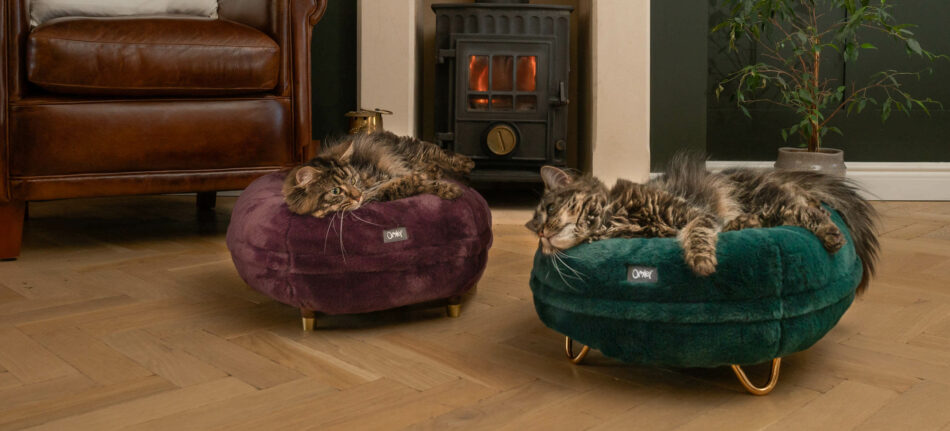
Dogs and the changing seasons
When the seasons change, dogs are some of the first to feel the difference. Cooler temperatures, shifting daylight hours, and unpredictable weather can all impact their routines and comfort. While some dogs are more adaptable, others may need a little extra attention to stay cozy and active. Fortunately, with a few tweaks to their daily schedule and environment, you can ensure that your canine companion is comfortable through every season.
Changing walk schedules
With the shorter days of autumn and winter, you might find it harder to fit in your dog’s daily walk during daylight hours. Early mornings and late evenings tend to be dark and potentially less safe, but there are ways to adjust. Consider moving your walks to midday when the sun is at its peak, or use reflective gear and LED lights on your dog’s collar and lead for those darker strolls. These small changes not only keep you and your dog visible but also help maintain a consistent walking routine. If you’re limited to walking after work or before sunrise, find well-lit areas or parks to keep both you and your pup safe.
Bath rituals
Wet weather often means muddy paws, and while some dogs adore running through puddles, it’s important to have a clean-up plan after rainy walks. Many dogs aren’t huge fans of baths, but making bath time a positive and relaxing experience can change that. Have warm towels and gentle, dog-safe shampoo on hand, and consider using a hose attachment in your shower or a pet-specific bath setup for easy rinsing.
After walks, quickly wipe down muddy paws and coats to avoid tracking dirt through the house. Does your dog mind the rain? It depends on the dog breed and their personality. Some dogs may be indifferent or even love the rain, while others will stubbornly avoid it. In either case, a good raincoat for dogs can help minimize the mess.
Regulating your dog’s temperature
As the temperatures drop, keeping your dog comfortable is essential. Some dogs, especially those with thicker coats, love the cooler weather and might even prefer the cold to heat. However, smaller or short-haired breeds may need a little extra help. If your dog shivers or seems uncomfortable during walks, try a well-fitted coat or sweater to keep them warm. Indoors, make sure your pet has a cosy dog bed that provides insulation from cold floors. Heated pet beds or orthopedic mats with added cushioning can make a world of difference. If you live in a particularly chilly area, consider limiting your dog’s time outside on freezing days.
Indoor games for rainy days
When bad weather strikes, outdoor play may not be an option. But don’t worry—there are plenty of ways to keep your dog entertained indoors. Interactive toys, like treat-dispensing puzzles, can engage your dog’s mind and stave off boredom. Tug-of-war, fetch down a hallway, or even teaching your dog new tricks are great options when you can’t head outside. Keeping your dog physically and mentally active, even when the weather isn’t ideal, ensures they stay healthy and content.
Cats and the changing seasons
While cats may not experience seasonal shifts as dramatically as dogs, they are still sensitive to changes in temperature, light, and even humidity. Cats are creatures of habit, and they often adjust their behaviour as the environment around them shifts. As the seasons change, here’s how you can help your feline friend remain happy, healthy, and comfortable.
Enrichment ideas
With colder or wetter weather, many indoor-outdoor cats might prefer to spend more time inside, while fully indoor cats might experience fewer daylight hours for their regular activities. To keep your cat stimulated indoors, consider adding new enrichment toys or cat climbing structures. Omlet’s custom-designed Freestyle cat tree or LED lit Switch cat scratching post can turn any room into an adventure. Engaging your cat with interactive toys, puzzle feeders, or laser pointers will help them stay active and entertained even on the dreariest of days.
Seasonal changes in cat behaviour
As the seasons change, you might notice subtle shifts in your cat’s behaviour. Some cats may become more lethargic or seek out warm spots in the house during the colder months. Others may have a stronger hunting instinct when it gets dark earlier. Be mindful of these changes and adjust their routine accordingly. More frequent play sessions, cosy cat beds for napping, and a little extra love can make all the difference in keeping your cat content.
Increased grooming
When it comes to grooming, many cats will begin shedding their summer coat in the cooler months, which can lead to more hair around the house. Regular brushing can help reduce shedding and prevent hairballs. If your cat is prone to matting, keeping up with grooming is especially important as their winter coat thickens. Using gentle tools like a slicker brush or comb can help your cat stay clean and comfortable as the seasons shift.
Regulating your cat’s temperature
While cats generally handle cold weather better than some other pets, they still appreciate a warm, cozy environment. As your home’s temperature fluctuates, make sure your cat has plenty of comfortable places to snuggle. Raised cat beds allow your cat to avoid any cold, drafty air and cosy cat blankets help to keep them warm on colder days. If your cat loves to bask in the sun, find them a sunny window perch where they can nap in comfort, even as the days grow shorter.
Omlet and your pets
At Omlet, we believe that pets and their owners deserve comfort, practicality, and joy no matter the season. Our thoughtfully designed products—from cosy dog beds to interactive cat climbing towers—are here to help your pets thrive year-round. By asking the right questions, we’re able to create innovative solutions that bring you and your pets closer together. With Omlet’s range of pet-friendly products, you’ll be ready to tackle any weather with ease. Because when your pets are happy, you’re happy—and that’s what matters most to us.
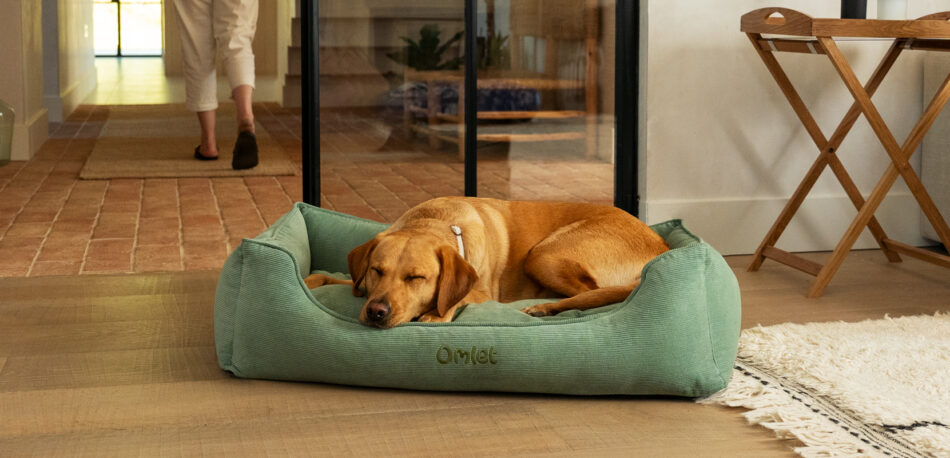

This entry was posted in Cats
Cats are fascinating creatures, full of quirks that often leave us scratching our heads and wondering what’s going on in those furry little minds. Whether you’re a seasoned cat owner or new to the feline world, it’s natural to have questions about their behaviour. From the mysterious purr to their love of high places, cats exhibit behaviours that spark curiosity. Let’s dive into seven commonly asked questions about cats and explore the unique traits that make them such intriguing companions.
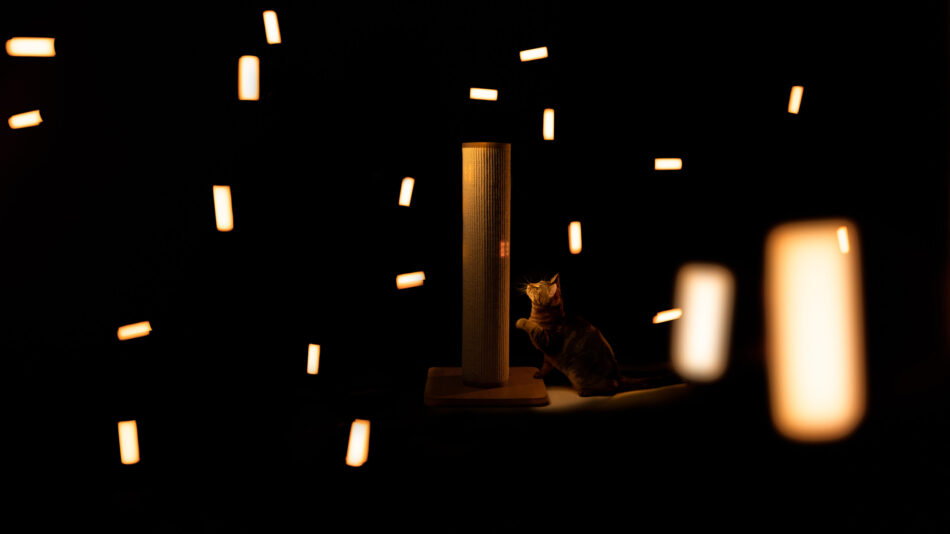
1) Do cats have nine lives?
The myth that cats have nine lives has been around for centuries, and while we know it’s not literally true, there’s no denying that cats have a remarkable ability to escape danger and survive harrowing situations. This legend likely originated from cats’ incredible agility and seemingly uncanny ability to land on their feet from great heights. Their flexible spine and keen sense of balance give them a better chance at survival in risky situations, making it seem like they possess extra lives.
However, it’s important to remember that cats are just as mortal as any other living creature. While they might give the impression of being invincible, they are still vulnerable to injuries and illnesses. Providing proper care, regular vet check-ups, and a safe environment is crucial to ensuring your cat lives a long, healthy life, even if they only have one life to live.
2) Why do cats like lasers?
If you’ve ever watched a cat chase a laser pointer, you’ve likely seen them go wild with excitement. But why are cats so captivated by that elusive red dot? The answer lies in their natural hunting instincts. Cats are predators by nature, and the quick, erratic movement of a laser mimics the behaviour of prey. This triggers their instinct to chase, pounce, and capture the “prey,” even though they can’t physically catch the laser beam.
Looking to elevate your cat’s laser chasing game? Why not give them their love of lasers coupled with their love of scratching with the Switch Cat Scratching Post, designed by Omlet. This ingenious product blends the best of both worlds for cats and creates magic with integrated LEDs in the post that allow you and your cat to explore hours of fun.
3) Why do cats dislike water?
Most cats are known for their aversion to water, and this behaviour often puzzles cat owners. The primary reason cats dislike water is due to their grooming habits. Cats spend a significant amount of time grooming themselves to keep their fur clean and free of oils. When their fur becomes wet, it can feel heavy and uncomfortable, making it harder for them to stay warm and dry quickly.
Another factor could be their evolutionary history. Unlike big cats like tigers, who are excellent swimmers, domestic cats’ ancestors lived in dry, arid environments where water was scarce. As a result, they didn’t develop the same affinity for water as other animals. While there are exceptions, with some cats actually enjoying the occasional bath, most would prefer to stay dry and cozy.
4) Why do cats purr?
The gentle sound of a cat purring is often associated with contentment, but there’s more to this soothing noise than meets the ear. Cats purr for various reasons, and while it’s commonly believed to be a sign of happiness, cats also purr when they are frightened, injured, or even in labour. This suggests that purring could be a way for cats to comfort themselves or communicate with others.
Interestingly, the frequency of a cat’s purr (between 25 and 150 Hertz) has been shown to have healing properties, potentially helping to relieve pain, reduce stress, and promote healing in their bodies. So, the next time your cat curls up and starts to purr, it could be their way of telling you they’re happy, but also that they’re taking care of themselves in ways we’re only just beginning to understand.
5) Why do cats knead with their paws?
Kneading is a behaviour that many cat owners find both adorable and curious. When a cat rhythmically presses its paws into a soft surface, it’s known as kneading, or “making biscuits.” This behaviour is thought to originate from kittenhood when kittens knead their mother’s belly to stimulate milk flow. It’s a comforting action that often continues into adulthood, serving as a sign of contentment and security.
Cats may knead on soft cat blankets, your lap, or even their comfy cat bed. While kneading is generally a sign of happiness, it can also be a way for cats to mark their territory. Cats have scent glands in their paws, so when they knead, they’re leaving their scent behind, claiming their favourite spot as their own. So, if your cat starts kneading on you, take it as a compliment—they’re marking you as part of their territory.
6) Why do cats like to climb?
Cats have a natural instinct to climb, which stems from their ancestors’ need to escape predators and hunt prey. Climbing gives cats a higher vantage point, allowing them to survey their surroundings and feel secure. In the wild, big cats often climb trees to spot prey or avoid threats, and our domestic cats carry this instinct with them.
In your home, this translates to cats seeking out high places like shelves, window sills, or even the top of your refrigerator. Providing vertical spaces, like cat trees or wall-mounted shelves, can help satisfy this natural behaviour and keep your cat happy and mentally stimulated. Plus, it gives them a safe place to retreat to when they need a little alone time.
7) Why do cats like catnip?
Catnip is famous for driving cats into a frenzy of excitement, but not all cats react to it. The response to catnip is hereditary, with about 50-70% of cats being affected by it. The active compound in catnip, nepetalactone, binds to receptors in a cat’s nose, triggering a burst of playful energy. The effects typically last about 10-15 minutes, after which the cat may lose interest until the scent fades, and they can be affected again.
Interestingly, the reaction to catnip is not universal—some cats may roll around, purr, or become hyperactive, while others might simply relax and enjoy a calm state of bliss. It’s worth noting that kittens and senior cats are often less responsive to catnip. If your cat does enjoy it, catnip can be a fun and harmless way to encourage play and enrich their environment.
Omlet and your cat
Cats are full of mystery and charm, with behaviours that never cease to amaze us. Understanding these common questions about your feline friend can help you build a deeper connection and provide a more enriching environment for them. At Omlet, we’re dedicated to celebrating the unique bond between pets and their people, offering products designed to cater to every aspect of your cat’s life. From cosy cat beds to innovative cat trees, our products help answer all of your cat’s questions in a way that you both will love.
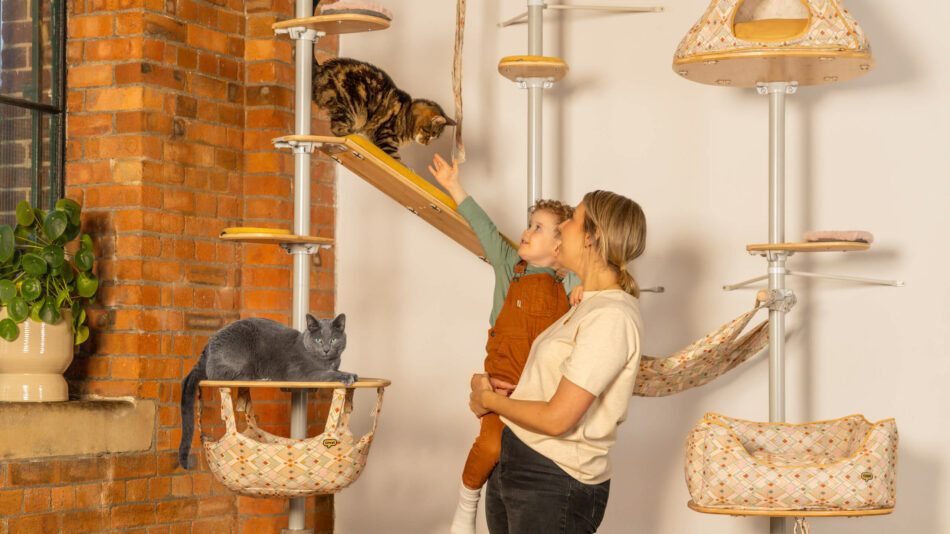

This entry was posted in Cats
As summer rolls in with its bright sunshine and warm breezes, we find ourselves eager to embrace the great outdoors. Yet, amid our sun-soaked adventures, it’s easy to forget that our indoor cats crave excitement and stimulation too. While we bask in the joys of summer, our feline friends need engaging activities to keep their spirits high and their minds sharp. In this blog we’ll guide you through creative and safe ways to keep your indoor cats entertained during the summer, ensuring they enjoy the season as much as we do.
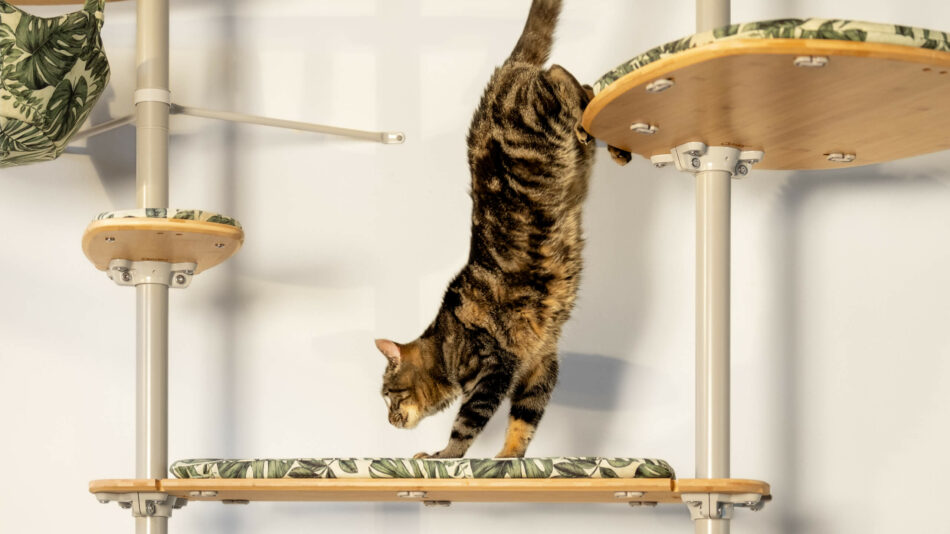
Creating outdoor spaces with Catios and Catio tunnels
One of the best ways to let your indoor cat enjoy the summer breeze safely is by providing them with an outdoor catio. A catio, or “cat patio,” is a secure outdoor enclosure that gives cats the freedom to experience the outdoors without the risks associated with free roaming. Consider it an enclosed playground for your feline friend where you can move about freely with them to engage and explore.
The Omlet Catio is a perfect solution for cat owners looking to create a safe, outdoor space. Designed with durability and security in mind, the Omlet Catio ensures that your cat can enjoy the summer air without any danger. The sturdy construction and predator-proof materials offer peace of mind while your cat indulges in the sensory experiences of the outdoors. Additionally, the modular design means you can customize the space to fit your specific needs and the layout of your garden or patio.
Adding catio tunnels can enhance this setup, allowing your cat to explore and move between different outdoor spaces connected to your home. Connecting your catio to the house with Omlet catio tunnels further enriches your cat’s environment. These tunnels are not only secure and robust but also provide an exciting pathway for your cat to explore. The flexibility of the Omlet catio tunnels allows you to design a maze of adventures, keeping your cat entertained and active as they navigate their mini outdoor kingdom.
Indoor entertainment with Freestyle Cat Tree
When the summer heat becomes too intense, or you simply want your cat to have a cool indoor retreat, an indoor climbing tower can be the perfect solution. The Indoor Freestyle Cat Climbing Tower from Omlet is an innovative way to bring adventure indoors, offering a customizable playground that can keep your cat entertained for hours.
The Omlet Freestyle Cat Tree is designed to fit any space, providing endless customization options to suit your home and your cat’s preferences. The versatility of the Freestyle Cat Tree means you can create a unique structure that includes various climbing poles, platforms, hammocks, and scratching posts. This not only keeps your cat physically active but also mentally stimulated as they navigate their indoor jungle gym.
The ability to modify and expand the setup ensures that your cat’s play area remains fresh and engaging, preventing boredom and promoting a healthy, active lifestyle. With the Omlet Freestyle Cat Tree, you can create a dynamic and fun indoor environment that your cat will love, all while staying cool in the comfort of your home.
Outdoor fun with Freestyle Cat Tree
For those cats who crave the thrill of climbing and exploring in the open air, the Outdoor Freestyle Cat Climbing Tower, designed by Omlet, offers an ideal solution. This outdoor climbing system can be integrated into your catio, providing a stimulating environment where your cat can enjoy the benefits of outdoor play while staying safe.
The Outdoor Freestyle Cat Climbing Tower is designed with the same attention to detail and quality as their indoor counterpart, but with materials that withstand the elements. The outdoor version is highly customizable, allowing you to create an intricate climbing structure that fits perfectly within your Catio or garden space. With features such as weather-resistant platforms, durable climbing poles, and various accessories, your cat can enjoy a rich, engaging outdoor environment.
This climbing tower is not only a fantastic exercise tool but also a way to satisfy your cat’s natural curiosity and desire for adventure. The ability to configure the structure to include multiple levels, bridges, and perches means your cat can explore different heights and pathways, keeping them entertained and physically fit. It also ensures that your cat’s outdoor space is as exciting and enriching as possible, providing endless opportunities for play and exploration.
Omlet and your cat
Omlet is dedicated to celebrating the special bond between pets and their owners by asking the right questions to create ingenious products that cater to both. Our range of customizable and innovative cat products is designed to serve you and your cat for a lifetime, ensuring you can build better, stronger bonds together. Whether it’s providing a secure outdoor catio, an engaging indoor cat climbing tower, or an adventurous outdoor cat climbing setup, Omlet’s products are crafted to enhance the lives of pets and their people.
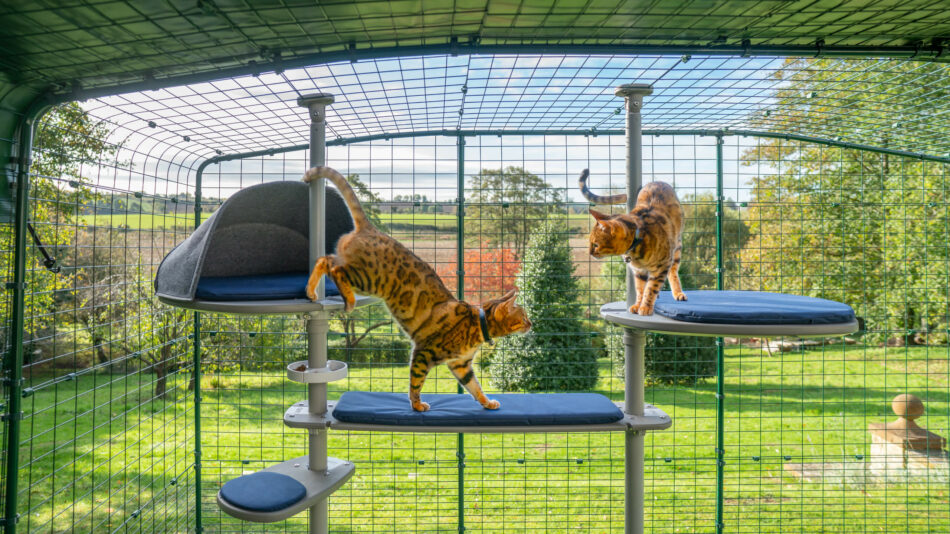

This entry was posted in Cats
As the summer months heat up, it’s important to keep your feline friend cool and entertained. Cats may not be as high-maintenance as dogs when it comes to outdoor activities, but they still need stimulation and exercise. Here are five enriching activities that will keep your cat happy, healthy, and engaged during the sweltering summer days.

Cool environments inside and out
Creating a comfortable environment for your cat both indoors and outdoors is essential during the summer. One great way to provide a cool, shady retreat for your cat outside is by setting up a catio. These enclosed outdoor spaces allow your cat to enjoy the fresh air and sunshine without the risk of roaming free. Ensure the catio offers plenty of shade to keep your cat cool and protected from direct sunlight. Adding features like elevated platforms, tunnels, and cosy corners will make the catio more appealing and provide your cat with various spots to relax and stay cool.
Connecting your catio to the house with a catio tunnel is a fantastic idea. This way, your cat can freely move between the cool indoor air conditioning and the shaded outdoor space as they please. The ability to come back inside when it gets too hot will ensure your cat stays safe and comfortable. Make sure the indoor environment is just as inviting, with plenty of cool spots, fans, and perhaps even a cooling mat specifically designed for pets.
Make hydration fun
Keeping your cat hydrated is crucial, especially during the hot summer months. One way to encourage your cat to drink more water is by making hydration fun. Cats can be notoriously finicky about drinking water, so getting creative can help. Try offering frozen treats or ice cubes in their cat water dish. The novelty and the cooling effect will often entice them to drink more. You can also create fun feeding stations with water fountains designed for pets. The moving water can be more appealing to cats than still water, encouraging them to drink more frequently.
Another trick is to incorporate water into playtime. For instance, you can freeze cat-safe broth or wet food into ice cubes and let your cat bat them around. Not only does this keep them hydrated, but it also provides mental stimulation and exercise. Always ensure that the frozen treats are safe for your cat and avoid any ingredients that could be harmful.
Kitty playdates
Social interaction is important for cats, and playdates with other feline friends can be a great way to help them expend energy and stay cool. If you have multiple cats or know other cat owners, arranging playdates in a cool environment can be highly beneficial. Make sure the space is well-ventilated and cool, with fans or air conditioning to keep the temperature comfortable. Supervised playtime can prevent any aggressive behaviour and ensure all cats are getting along.
Introducing new toys and activities during these play dates can keep things exciting. Interactive toys, climbing cat tree structures, and even simple cardboard boxes can provide hours of entertainment. Watching cats interact and play together can also be a joy for cat owners, providing a sense of community and shared experience.
Bring the outdoors inside
When it’s too hot for your cat to be outside, bringing elements of the outdoors inside can keep them entertained and engaged. Creating a personalized rooting station with cat-friendly plants like catnip, cat grass, or silver vine is a great idea. These plants are safe for cats to nibble on and can provide a sensory experience that stimulates their natural instincts.
You can set up a small indoor garden area with a variety of textures and scents to keep your cat interested. Rotate the plants regularly to keep things fresh and exciting. Additionally, consider adding perches or shelves near windows so your cat can watch birds and outdoor activity from the comfort of a cool indoor spot. This can satisfy their curiosity and hunting instincts without exposing them to the heat.
Teach new tricks
Summer is a great time to bond with your cat by teaching them new tricks. Training your cat to walk on a leash can open up new possibilities for outdoor exploration in a controlled manner. Start with a comfortable harness and take things slowly, allowing your cat to get used to the sensation. Once they are comfortable, you can take short walks in shaded areas during cooler parts of the day, such as early morning or late evening.
Playing fetch with your cat inside is another fun activity. Many cats can be trained to fetch small toys or balls, providing both mental and physical exercise. Use treats and positive reinforcement to encourage this behaviour. Teaching new tricks not only strengthens the bond between you and your cat but also keeps their minds active and curious.
Omlet and your cat
At Omlet, we understand the importance of keeping your cat happy and engaged, no matter the season. Our innovative products are designed with curiosity and care, just like the cats we make them for. From catios to cosy cat beds, we create items that not only meet your cat’s needs but also enhance the time you spend together. Embrace the summer with these enrichment activities, and let Omlet help you make every moment with your feline friend enjoyable, no matter the weather outside.


This entry was posted in Cats
Cats are not just pets; they are cherished members of our families, providing us with companionship, comfort, and endless entertainment. But beyond being cuddly creatures who laze in the sun, cats are intelligent and curious beings who thrive on mental and physical stimulation. Engaging in enriching activities with your cat not only keeps them happy and healthy but also strengthens the bond between you. Here are six fun and enriching activities you can enjoy with your feline friend.

Watch Cat TV together
What better way to bond with your cat than by indulging in some quality screen time together? Yes, screen time. There are several ways to create a “Cat TV” without actually sitting in front of the television. Whether it’s a mesmerizing fish tank, an ocean screensaver, or a dedicated cat app filled with fluttering birds and scampering critters, you and your cat can snuggle up to enjoy some sights and sounds together.
Cats are natural hunters, and these virtual scenes stimulate their predatory instincts, providing both mental and visual stimulation. As you watch together, observe your cat’s reactions – the flick of their tail, the twitch of their ears – and revel in the shared experience. It’s a simple yet effective way to connect with your cat on a primal level, fostering a deeper understanding and appreciation for their natural instincts.
To enhance the experience, consider introducing interactive elements. Fun cat toys dangled in front of the fish tank or cat treats strategically sprinkled around the viewing area encourage your cat to engage both mentally and physically. And why not join in the fun yourself? Mimic the movements of the creatures on screen or engage in a playful dialogue with your cat about the on-screen action. Before you know it, you’ll find yourselves immersed in a shared world of excitement and wonder, deepening your bond together.
Puzzle feeder and treat dispensers
Mealtime doesn’t have to be just about filling your cat’s bowl with kibble. Introduce some excitement and mental stimulation by investing in puzzle feeders and treat dispensers. These interactive feeding tools require your cat to work for their food, engaging their problem-solving skills and providing a fun challenge. Whether it’s rolling a ball to release treats or navigating through a maze to reach their meal, puzzle feeders turn mealtime into a rewarding and enriching experience. Plus, it helps prevent boredom and overeating, keeping your cat mentally and physically stimulated.
But how can you enjoy this activity with your cat? Start by choosing a puzzle feeder or treat dispenser that suits your cat’s size and skill level. Then, hide the dispenser behind furniture or under their plush cat blanket to add an extra layer of intrigue. You can even incorporate it into a mini obstacle course for an extra dose of excitement. And don’t forget to switch things up regularly to keep your pet’s interest piqued. With a bit of imagination and a whole lot of treats, puzzle feeders and treat dispensers can turn ordinary mealtimes into unforgettable adventures for you and your furry companion.
Create an indoor kitty playground
Transform your home into a feline paradise by creating an indoor playground. Cats love to explore and climb, and providing them with a variety of textures and heights to navigate keeps them entertained and engaged.
Set up a cardboard fortress for them to conquer, drape blankets over furniture to create cozy hiding spots, and scatter toys throughout the space for added excitement. Not only does this encourage physical activity and mental stimulation, but it also strengthens the bond between you as you play and explore together.
If DIY isn’t your style or you want to add more sophistication to your cat’s playground, consider investing in a cat climbing tree. The customizable options from Omlet offer a variety of indoor playground setups that cater to all kinds of feline preferences, from adventurous climbers to laid-back loungers. The modular designs of the Freestyle cat tree let you mix and match components, ensuring a perfect fit for your home and your cat’s needs. Whether it’s a stylish cat tree, an interactive play tunnel, or a combination of both, Omlet’s playgrounds are designed to provide endless fun and stimulation.
Clicker training
Think dogs are the only ones who can learn tricks? Think again. Cats are incredibly intelligent animals capable of learning a variety of behaviours through positive reinforcement training, using a clicker as a marker for desired actions. Whether it’s sitting, shaking paws, or jumping through hoops, clicker training provides mental stimulation and strengthens the bond between you and your cat through shared learning experiences. Plus, it’s a fun way to challenge your cat’s cognitive abilities and teach them new skills while reinforcing positive behaviours.
Getting started with clicker training is simple and rewarding. Begin by ‘charging’ the clicker: click it, then immediately give your cat a treat, repeating this several times until they associate the sound with something positive. Once your cat is tuned into the clicker, you can start shaping behaviours. For instance, if you want to teach your cat to sit, wait for them to naturally sit down, click the moment their bottom touches the ground, and reward them. Gradually, your cat will learn to associate the action with the click and the reward. The best part? Training sessions are brief, keeping your cat’s attention without overwhelming them, making it a perfect daily activity to stimulate their mind and keep them happy.
Plant a feline friendly garden
Bring the outdoors inside by creating a cat-friendly garden filled with safe, non-toxic plants for your feline friend to explore. Catnip, wheatgrass, and spider plants are just a few examples of plants that cats love and are safe for them to nibble on. Not only does this provide your cat with sensory enrichment and mental stimulation, but it also brings a touch of nature into your home, creating a calming and relaxing environment for both of you to enjoy.
Creating your indoor garden is simple and can be done with a few basic supplies. Start with some small pots or a window box, fill them with organic soil, and plant seeds or seedlings of cat-friendly greens. Make sure to include a variety of textures and heights to keep your cat intrigued. As the plants grow, your cat will enjoy nibbling on the fresh greens, which are not only safe but beneficial for their digestion. Plus, nurturing these plants can be a soothing and rewarding hobby for you, making it a delightful project that enriches both your lives.
One-on-one interactive play session
Nothing beats good old-fashioned playtime when it comes to bonding with your cat. So set aside dedicated time each day for one-on-one interactive play sessions, using toys such as feather wands, laser pointers, and interactive catnip toys to engage your cat’s natural instincts. Get down on their level and let them chase, pounce, and stalk to their heart’s content. Not only does this provide physical exercise and mental stimulation, but it also strengthens the bond between you as you share moments of joy and laughter together.
Rotate toys regularly to keep things fresh and exciting. Incorporate a mix of high-energy play, like chasing and jumping, with quieter activities, such as puzzle feeders or hiding treats around the house for them to find. This variety not only keeps your cat engaged but also allows you to spend quality time together in different ways, building a deeper connection. Remember, it’s not just about the play—it’s about the joy and love shared in those moments.
Omlet and your cat
At Omlet, we understand the importance of nurturing the bond between pets and their owners. That’s why we’re dedicated to creating innovative products that enhance the lives of both you and your cat, fostering meaningful connections and enriching experiences. From customisable indoor cat trees to cosy cat beds, we celebrate the wondrous connections between humans and their feline companions, helping you create memories that last a lifetime. So why wait? Start exploring the world of Omlet today and discover how you can elevate your bond with your beloved cat.
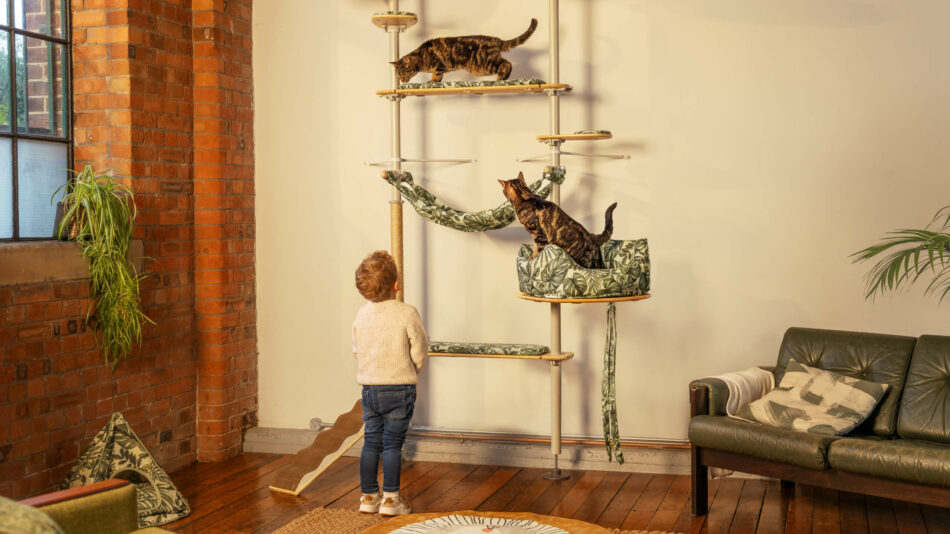

This entry was posted in Cats
When it comes to domesticated felines, the great debate between indoor and outdoor living is decades long. While keeping cats indoors is often deemed safer due to various hazards lurking outside, many cat owners ponder how to provide their beloved companions with the enriching experience of outdoor exploration without exposing them to potential dangers. This conundrum prompts a closer look at the benefits of outdoor play for indoor cats and the innovative solutions available to ensure their safety and enjoyment.
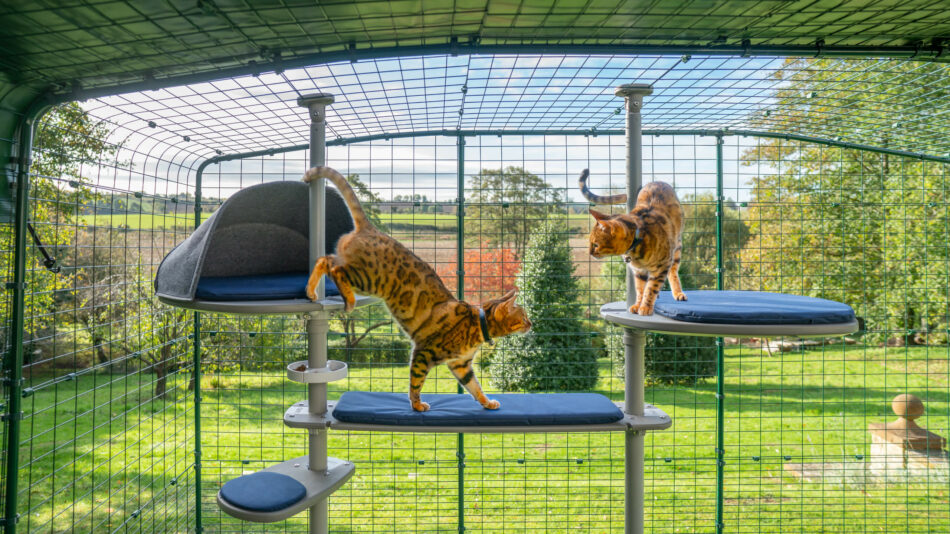
Benefits of outdoor play for indoor cats
Indoor cats, though content within the confines of their homes, can greatly benefit from occasional ventures into the great outdoors. Outdoor play satisfies a cat’s innate curiosity and desire for stimulation. The sights, sounds, and smells of the natural world offer a sensory feast for felines, enriching their lives and preventing boredom.
Moreover, outdoor exploration encourages physical activity, aiding in weight management and promoting overall health and well-being. By engaging in activities such as climbing, chasing, and hunting (albeit in a controlled environment), indoor cats can fulfil their natural instincts and expend pent-up energy. After all, a tired cat is less likely to be bored, and so less likely to use your furnishings as an outlet for unspent energy.
Safety options and tips
So, you want to let your cat explore the great outdoors, but you’re worried they may get hurt. Concerns about the safety of outdoor excursions for cats are valid. But with careful planning and the right equipment, owners can provide their feline friends with a safe and secure outdoor environment.
- Tip #1: One of the safest ways to allow indoor cats to experience the outdoors is through the use of specially designed enclosures, such as catios. These enclosed outdoor spaces offer a controlled environment where cats can enjoy the sights and sounds of nature without being exposed to potential hazards like traffic or predators.
- Tip #2: Always use preventative medications for fleas and ticks when planning to take your indoor cat outdoors. By ensuring your cat is current on their vaccinations, you can feel confident knowing that they can explore the outdoors and stay healthy.
- Tip #3: Avoid placing your cat enclosure in an area that has been sprayed with harmful pesticides or contains toxic plants for cats.
Outdoor solutions by Omlet
When it comes to creating safe and stimulating outdoor environments for indoor cats, Omlet leads the way with its innovative products designed to enhance the feline experience.
The Catio
The Catio outdoor cat enclosure is a prime example of Omlet’s commitment to feline welfare and owner satisfaction. This spacious enclosure provides ample room for cats to roam, climb, and relax in a protected outdoor environment. With its durable construction and customizable design options, the Catio offers a secure and stylish solution for cat owners seeking to enrich their pets’ lives.
Freestyle outdoor cat tree
Designed to work inside your Catio, Omlet’s Freestyle Outdoor Cat Tree is a versatile outdoor activity centre that allows cats to indulge their natural climbing instincts in a safe and controlled manner. With multiple platforms, scratching posts, and hideaways, this innovative structure provides endless entertainment for cats while promoting exercise and mental stimulation.
Catio tunnels
For cat owners looking to seamlessly integrate indoor and outdoor spaces, Omlet’s Catio tunnels offer a convenient solution. These specially designed tunnels connect the Catio to your home, allowing cats to move freely between indoor and outdoor environments while remaining safely enclosed. With their durable construction and easy installation, Catio tunnels provide peace of mind for owners and independence for cats, fostering a deeper connection between your pet and their surroundings.
Omlet and your cat
At Omlet, the relationship between pets and their owners is at the heart of everything we do. By asking the right questions and understanding our furry friends from a pet perspective, we strive to create products that enhance the bond between people and their pets. From innovative outdoor cat enclosures to interactive cat climbing trees and convenient tunnel systems, Omlet empowers cat owners to provide their indoor companions with enriching outdoor experiences while prioritizing safety and security, for calmer, more contented cats who’ll enjoy those cuddles on the couch all the more.


This entry was posted in Cats
Welcome to the fascinating world of feline behaviour. Cats, with their mysterious ways and charming personalities, have intrigued humans for centuries. In this guide, we’ll take a look at the enlightening journey to decipher the language of our beloved feline companions. From decoding their body language to understanding their various moods and behaviours, this guide aims to provide valuable insights into the inner workings of your cat’s mind. By gaining a deeper understanding of why cats behave the way they do, you’ll be better equipped to foster a harmonious and fulfilling relationship with your furry friend.

Learning to read cat language
One of the keys to learning your cat’s language lies in interpreting their body language. Cats communicate a wealth of information through subtle cues such as ear position, tail movements, and facial expressions. Understanding a cat’s body language is like deciphering a mysterious code, but once you crack it, you’ll find yourself fluent in feline.
Cat tail
Let’s start with the cat tail—it’s like their personal communication system. A straight-up tail signals confidence and a friendly greeting, while a swishing tail might indicate agitation or playful anticipation. If the tail puffs up like a bottle brush, watch out—your kitty might be feeling threatened or startled.
Cat ears
All cats like a good scratch behind the ears but did you know their ears are another window into a cat’s mood? Forward-facing ears mean your cat is curious or engaged in what they are sensing. However, flattened ears are a signal of fear or aggression.
Cat eyes
Don’t forget to keep watch of these eye blinks too. Slow blinks are the feline equivalent of a love letter, showing trust and contentment. Whereas long, focused stares indicate they are honed in on something important. By paying close attention to these signals, we can gain valuable insights into our cat’s emotional state and respond accordingly.
But why do cats behave this way? Much of feline body language can be traced back to their evolutionary history as solitary hunters. In the wild, cats rely on their ability to communicate effectively with other cats to establish boundaries, express dominance, and signal readiness to interact or defend themselves. Understanding these innate behaviours can help us better navigate our interactions with our domesticated feline friends and build trust and rapport over time.
Understanding cat moods
Understanding a cat’s mood goes beyond just observing its body language; it’s about tuning into the subtle cues that reveal their inner emotional states. Cats are complex creatures, and decoding their moods requires a keen eye and a bit of intuition. By familiarizing ourselves with the various moods and behaviours displayed by cats, we can better understand their needs and provide appropriate care and support.
One telltale sign of a content cat is the rhythmic swishing of its tail, accompanied by relaxed ears and half-closed eyes. In this state, your feline friend is likely feeling calm and comfortable, basking in the warmth of your companionship. On the flip side, if you notice your cat’s tail twitching rapidly or its ears flattened against its head, it might be feeling agitated or anxious. Understanding these signals allows you to adjust your approach and provide the appropriate support, whether it’s giving them space or offering reassuring pets.
But what causes these shifts in mood? A cat’s mood can be influenced by various factors, including their environment, routine, and social interactions. Changes in behaviour, such as excessive grooming or withdrawal, could signal underlying stress or discomfort. It’s essential to pay attention to these subtle shifts and address any potential triggers to ensure your cat’s well-being.
Additionally, providing enrichment activities and opportunities for play can help alleviate boredom and prevent negative emotions from festering. By fostering a supportive and stimulating environment, you can cultivate a strong bond with your cat and better understand their unique personality quirks. After all, just like us, cats experience a range of emotions, and by tuning into their subtle cues, we can ensure they lead happy and fulfilling lives by our side.
Different cat breeds, different behaviour
Just like people, cats have their own unique personalities and ways of expressing themselves, often through subtle yet distinct body language cues. Different cat breeds may showcase varying behaviours and moods, adding a fascinating layer to their already enigmatic charm.
Take the Siamese, for example. Known for their vocal nature, these cats aren’t shy about expressing their feelings through meows and yowls. When a siamese is feeling content, they might purr melodically while rubbing against your legs affectionately. However, when they’re upset or feeling ignored, they’ll make their discontent known with loud vocalizations and perhaps even a stern stare.
On the flip side, the majestic Maine Coon tends to display a more laid-back demeanour. With their bushy tails held high and ears perked up, these gentle giants exude confidence and tranquillity. Yet, when a Maine Coon is feeling playful, their body language transforms into a lively dance of pouncing and chasing toys with gusto.
Contrastingly, the sleek and elegant Abyssinian carries themselves with an air of curiosity and intelligence. Their wide-eyed gaze and agile movements reveal a cat constantly on the lookout for adventure and stimulation. Whether they’re gracefully leaping onto high perches or engaging in a game of fetch, Abyssinians embody a spirited energy that’s as captivating as it is endearing.
In essence, understanding these subtle nuances of body language among different cat breeds adds depth to our bond with these fascinating felines.
You and your cat’s language
When you’re in sync with your cat’s body language, it’s like having a direct line to their innermost thoughts and emotions. This newfound understanding fosters a sense of trust and mutual respect between you and your furry companion. You’ll find yourself sharing inside jokes with your cat through playful interactions and knowing glances. Plus, being able to recognise when your cat is feeling happy, anxious, or in need of some alone time allows you to tailor your interactions accordingly, ensuring that they feel loved and cared for at all times. So, next time your cat gives you that knowing look or curls up beside you with a contented purr, remember, it’s all part of the beautiful dance of feline communication that deepens the bond between you both.
Omlet and your cat
Understanding cat behaviour is an ongoing journey that requires patience, observation, and empathy. By taking the time to learn and understand the unique language of your feline friend, you can forge a deeper and more meaningful connection that enriches both your lives. At Omlet, we are committed to fostering understanding and appreciation for the wondrous connections between pets and their people. Through our innovative products like the customizable Freestyle Indoor Cat Tree or the unique designs of the Maya Donut Cat Beds, we strive to empower pet owners to create lasting bonds with their furry companions. Together, let’s celebrate the magic of the pet-person bond and continue to explore the fascinating world of animal behaviour.


This entry was posted in Cats
At Omlet, we’re always asking how we can design better products that bring people and their cats closer. We believe that by understanding our cats’ natural needs and behaviours, we can invent new ways to enrich their lives and build a sense of security and fulfilment that leads to a stronger connection with their humans.
Our Catio Tunnels let your cat go from A to B independently, which suits their capricious natures, and means you no longer need to be at their beck and call for to and from Catio ferrying. An evolution of the thinking that led to our Catio and Outdoor Freestyle cat tree, they are designed so indoor cats can enjoy all the excitement of the outdoors safely, without compromising local wildlife that might otherwise fall prey to their apex predator instincts.
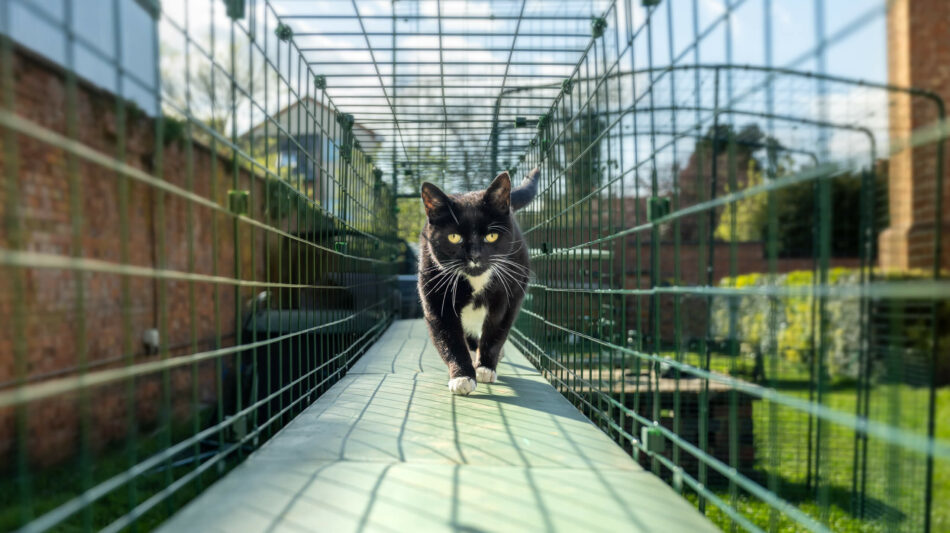
WHY KEEP A CAT INDOORS?
There are various reasons you may choose to keep your cat indoors. Some breeds are simply better suited to a quieter life and are too docile to go out unsupervised. Local conservation regulations can also be a big factor. Cats are apex predators, and not necessarily native to the ecosystem, despite being a globally popular pet. Small mammals and reptiles that have evolved without cats in their territory may not be equipped to deal with the threat they pose, which can lead to curfews for cats and strictures on free roaming. Then, there is the ubiquitous threat of traffic. For many cat lovers, the risk of passing cars is simply too great to be left to chance.
OPENING UP THE OUTSIDE
However, cats love to leap and climb, to feel the sun on their face and the breeze in their fur. They are curious and independent, and aren’t suited to life on a leash, or responsive to recall, like dogs are. With a Catio and an Outdoor Freestyle cat tree, your indoor cat can enjoy the benefits of the outdoors without the worry that comes with it – but there is still the restriction of going to and from the house and their Catio. So, we designed our Catio Tunnels, for all the joys of the outside, with the independence to take their fun and fulfillment to a new level.
SYSTEMATIC THINKING
One of our core beliefs is that our designs should suit as many cats and people as possible, so every indoor cat can go outside safely. Another of our values is to put sustainability and longevity at the center of all of our designs. One of our solutions to both of these challenges is to create modular systems that can easily be adapted, extended and maintained with minimal cost and effort.
“It’s about being able to easily and cost effectively replace parts if and when you need to. Planned obsolescence – which is when companies design products with a set lifespan and capitalize on that – has caused a scandal. So for example, a product might be designed so that if one small component breaks, you have to replace the entire product. All of our products are designed to be the opposite of this, so you can always replace a part.”
Charlie Watson, Lead Product Engineer
Our Catio Tunnels have been designed with four components, which, combined, can create a system to suit any house and outside space, all built with consciously chosen materials that are ideal for purpose and will last nine lives. Should any part need replacing, it can easily be done, meaning your Omlet Catio Tunnel System need never end up as landfill.
“These four elements let you have flexibility in your set up. By designing a modular system, we were able to create something affordable but scalable, making it a viable option for more people, and meaning that if you move house, you can bring your system with you and reconfigure it as needed.”
Charlie Watson
DESIGN THAT DOES MORE
You can make your Catio Tunnel System as simple or as complex as you like. Whether you want a straight tunnel to take your cat from window to Catio, or a labyrinth that lets them scale the sides of the house and tread a path through the treetops is entirely down to you.
- Create a secure point of entry with a window box or window board
- Tunnels can be wall mounted, run along the ground or freestanding with supports
- Junctions let tunnels turn corners
- Towers, with in-built steps, let your cat climb up or down
A ROBUST ROUTE
However long you make your Catio Tunnel System, you can do so secure in the knowledge that we never take shortcuts in design. Powder coated, steel mesh is sturdy and secure enough to contain can’t-catch-me leapers and escape-room defeaters. Our weatherproof Catio Tunnel System walkways have a slight curve that causes rain to run right off, and a textured surface for a good, firm grip.
You needn’t worry about traversing sloping ground or land at different levels either, as we’ve made sure the height of the stands that support the tunnels can be easily adjusted and the bases can be pivoted to compensate for inclines of up to 10 degrees. No wobbles, no worries.
OMLET PERFECTION PROCESS
Our designs are only ready when we’re satisfied. Until then, our product engineers tirelessly test, refine and repeat – and that includes the feline team members, who go above and beyond (literally, in this case) to ensure indoor cats everywhere can safely enjoy the wonders of the outside world.
“Our rigorous testing revealed we needed to modify our clip structure to keep our Catio Tunnel System stable in mid air and withstand full force feline leaping and chasing. So, we designed a reinforced clip with an intricate overlay that creates ultra tough, tight bonds that won’t come apart, no matter how rigorously the tunnels are rattled.”
Charlie Watson
From redesigning our existing clips to ensure they can securely hold vertical steel towers together, to ensuring all parts can be easily reconfigured and replaced as needed, every microscopic detail of our Catio Tunnel System has been carefully considered.
Omlet and your cat
Our designs exist so your cat can explore the outdoors safely, at their own pace and on their own terms, and needn’t miaow at the window when they’re ready to feel the fresh air in their fur, or stretch out in the sun. With greater independence, they can satisfy their curiosity safely, and come back in when they’re ready to curl up on the couch with you.
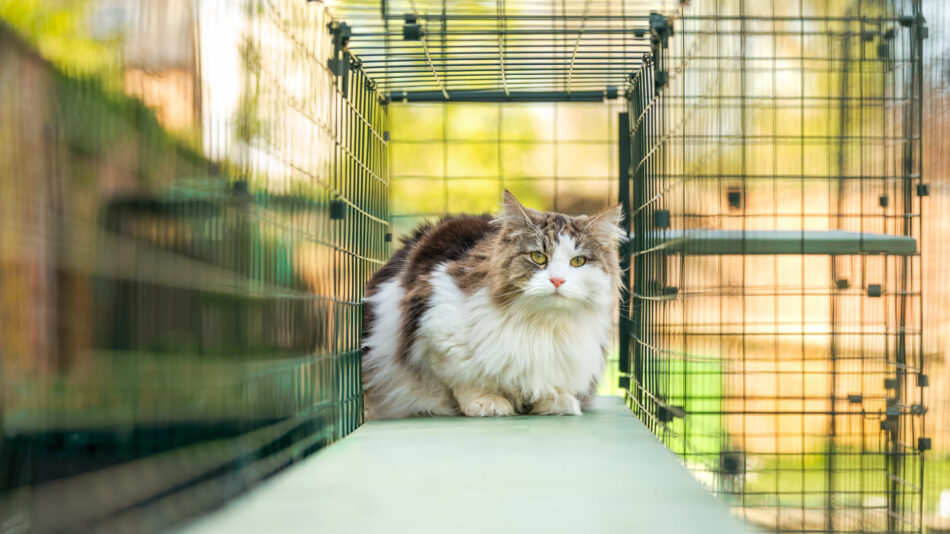

This entry was posted in Cats
Have you ever wondered, “What does my cat do all day?” In the realm of domesticated animals, few embody the enigmatic allure and effortless grace quite like our feline friends. Where naps reign supreme and curiosity knows no bounds, cats are an exquisite example of dancing between elegance and mischief. Yet in order to truly deliver the nuances of what a day in the life of a cat is really like, we felt it was only able to be done one way. From the viewpoint of a cat.
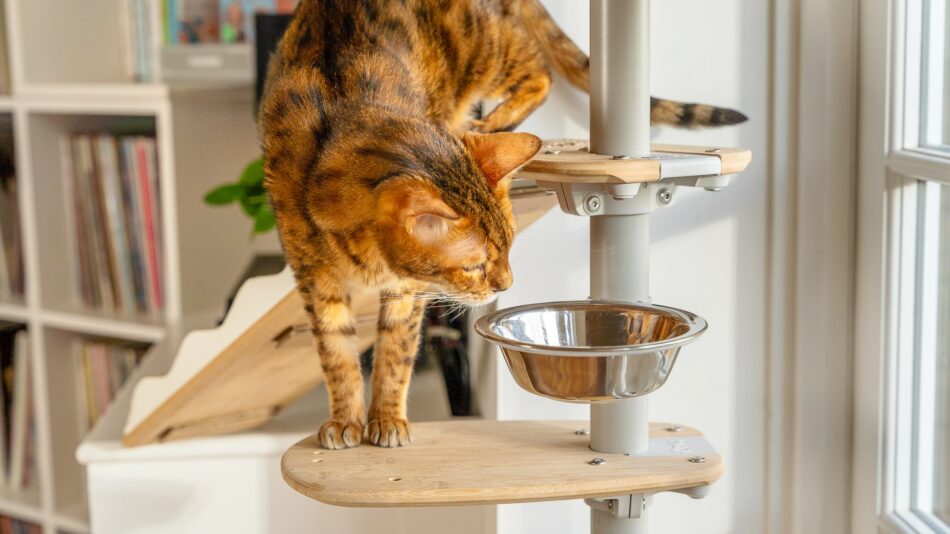
The dawn of the feline empire
It’s the crack of dawn – the time when the world is still draped in a blanket of silence, and the promise of a new day beckons. But not for us cats. No, we have our own alarm clock, and it goes off precisely when the first rays of sunlight sneak through the curtains. Forget gentle nudges or soothing melodies; we believe in the power of persistent meows and strategically placed paw taps to rouse our beloved human servants from their slumber. Hangry? Who, me? Nah, just eager to start the day with a delightful symphony of demands and complaints.
The breakfast buffet
With the sun peeking over the horizon, it’s time to indulge in the most important meal of the day – breakfast. But don’t be fooled by our animalistic inclines; we cats are connoisseurs of cuisine, with a discerning palate that can rival any food critic. Expect us to turn our noses up at yesterday’s leftovers or anything that doesn’t meet our lofty standards of culinary excellence. And don’t be lulled by our gentle purrs and strokable fur – unlike undiscerning dogs, who’ll try almost anything, we cats are carnivores to the core.
The art of the nap
After a meaty breakfast, it’s time to tackle the first nap of the day. But make no mistake; this is not your average snooze fest. Oh no, this is a carefully choreographed performance that involves finding the most comfortable spot in the house. Whether it’s on our cosy cat bed, our cat tree hammock or your freshly laundered clothes this is our time to assume a regal repose. Cat naps are not to be disturbed, lest you incur the wrath of a grumpy cat.
Morning stretches
After the morning nap, it’s time for our daily yoga session. Did you know the “cat pose” was actually named after us? Our ability to embrace the zen of flexibility is shown effortlessly in a series of stretches that would make any contortionist jealous. But the reality is we cats stretch to help our physical and mental well-being. We have lots we have to do throughout the day – napping, jumping, clawing, napping, pouncing – so stretching keeps our muscles loose and our minds engaged, releasing a fantastic burst of endorphins in the process. You humans should try it more often.
We incorporate our luxuriant stretches into another of our favourite pastimes: scratching. Do yourselves a favour, and ensure there’s a high quality scratcher somewhere convenient – we’re happy to use the couch, but something with a deep vertical groove for ultimate scratch and stretch satisfaction is preferable.
Playtime and the hunt for the perfect toy
As the day unfolds, so too does our insatiable appetite for mischief and mayhem. Enter playtime – a whirlwind of activity where every object becomes a potential toy waiting to be pounced upon. Whether we use your toys or ours is at your discretion. Your furniture is fine, but here are a few suggestions for superior alternatives:
- Cat climbing tree: We’re born to climb. It’s in our DNA, and we feel safest when we seek higher ground. So if you want to delight our senses in the best way possible, invest in a sturdy cat tree, such as the Freestyle Cat Tree by Omlet. Why? Because it can be customized to suit every cat’s style, with endless possibilities of places to hide, scratch, nap and play.
- Cat scratching post: Our obsession with scratching isn’t something that should be untrained. It’s an innate instinct that helps us maintain healthy claws and loose, limber muscles. Top tip? Pop a Switch cat scratcher by Omlet in your basket – this epic post is a scratcher and lightshow in one, with settings that replicate the movements of prey we love to chase. Combining two of our favourite pastimes, this is the ultimate two LED birds with one stone.
- Outdoor cat run: We may be indoor cats but our ancestors come from the wild. So heading outside to smell the fresh air and hear the sounds of nature on the breeze is a sure source of feline fun and joy. We’re not averse to you joining us, we’ll admit (grudgingly), we quite like your company. The Catio outdoor cat run is almost as clever as we are, as it allows us to enjoy the great outdoors safely with you by our sides, should we fancy a chin tickle.
- Cat toys: When it comes to cat toys, we’re really not that picky. Whether it’s a feather on a wand, a squeaky stuffed mouse or a catnip filled treat, we cats love to play with toys. Be sure to carve out time each day to play though, as playing with us is your favourite way to pass the time, and we’re happy to indulge you.
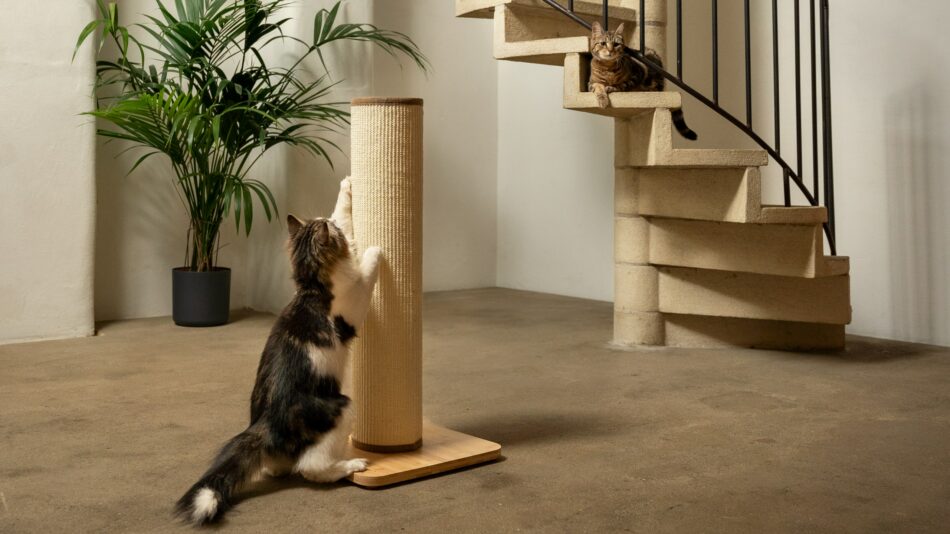
Midday Siesta
As the sun reaches its zenith, it’s time to retreat to the designated nap zone again. Choosing the perfect nap spot is an art, and we cats have perfected it. Whether it’s a sun-drenched windowsill or a cosy elevated cat bed, this is our time to close our eyes to the world, drifting into a realm where mice and laser pointers abound. The midday siesta is a sacred cat tradition that gives us an oasis of tranquility amidst the chaos of our thrilling existence.
Afternoon grooming
After our midday siesta we implore the grace of a seasoned spa enthusiast and embark on a grooming session that rivals the most sophisticated beauty routines. A cat’s coat is a masterpiece that demands meticulous care. For us cats, our tongues are like a brush, gliding through fur with unparalleled finesse. Humans may spend fortunes on hair care products, but we find solace in the simplicity of a well-executed grooming session.
Dinner time
As the shadows grow longer, our hanger takes centre stage once again. It’s dinner time and we fully plan on letting our humans know we are ready for our next culinary delights through ear splitting meows and powerful nudges. Meals are a cornerstone in our lives. With a consistent feeding routine we are better equipped to handle any unexpected changes in the household that could otherwise throw us off. So please remember to fill our cat food bowls at the same time everyday. You’re welcome.
Evening shenanigans
With a satisfied belly, it’s now time to embark on the evening’s mischief. A toppled vase here, a strategically placed furball there – our artistic endeavours know no bounds. We might even spend the evening weaving through the legs of our beloved human as a silent reminder of our presence in their world. But really, this is when our nocturnal instincts come to life. A quiet house is a signal to us that it’s time to prowl. We are apex predators after all.
Bedtime bliss
With the moon as our witness, it’s finally time to retire to the warm embrace of our cosy cat bed. As cats, we need to log 12-16 hours of sleep each day, so it’s important that we make the most of every nap, snooze, and snuggle. The day may end, but in our existence, this is just the beginning of another opportunity to conserve our energy so we can be ready for whatever leaping, pouncing or scratching awaits when we wake.
Omlet and your cats
We ask questions so we can invent – like, “What does a day in the life of a cat look like?” Fun as it is to slip into the fictional mind of our feline favourites, our relentless quest to understand their behaviour and needs is driven by our commitment to inventing products that take caring for the cats in our homes to new and unexpected levels. Our aim? To enhance the bond between cat and human in innovative and inspiring new ways, with designs like the Freestyle cat tree and the Switch cat scratcher. So the next time you wonder what’s going on in that mysterious feline mind, why not connect with us? What makes cats tick is one of our favourite topics.
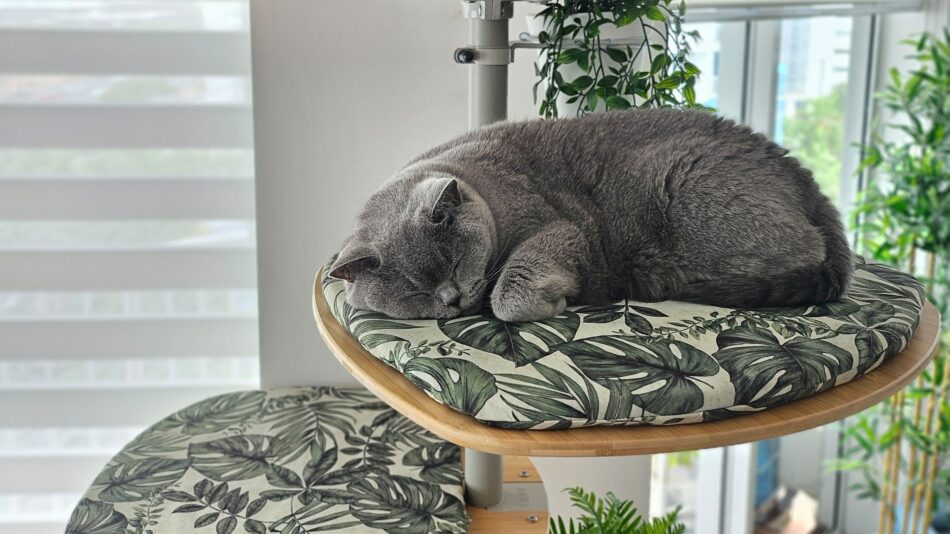

This entry was posted in Cats
Have you ever wondered, “What does my cat do all day?” In the realm of domesticated animals, few embody the enigmatic allure and effortless grace quite like our feline friends. Where naps reign supreme and curiosity knows no bounds, cats are an exquisite example of dancing between elegance and mischief. Yet in order to truly deliver the nuances of what a day in the life of a cat is really like, we felt it was only able to be done one way. From the viewpoint of a cat.

The dawn of the feline empire
It’s the crack of dawn – the time when the world is still draped in a blanket of silence, and the promise of a new day beckons. But not for us cats. No, we have our own alarm clock, and it goes off precisely when the first rays of sunlight sneak through the curtains. Forget gentle nudges or soothing melodies; we believe in the power of persistent meows and strategically placed paw taps to rouse our beloved human servants from their slumber. Hangry? Who, me? Nah, just eager to start the day with a delightful symphony of demands and complaints.
The breakfast buffet
With the sun peeking over the horizon, it’s time to indulge in the most important meal of the day – breakfast. But don’t be fooled by our animalistic inclines; we cats are connoisseurs of cuisine, with a discerning palate that can rival any food critic. Expect us to turn our noses up at yesterday’s leftovers or anything that doesn’t meet our lofty standards of culinary excellence. And don’t be lulled by our gentle purrs and strokable fur – unlike undiscerning dogs, who’ll try almost anything, we cats are carnivores to the core.
The art of the nap
After a meaty breakfast, it’s time to tackle the first nap of the day. But make no mistake; this is not your average snooze fest. Oh no, this is a carefully choreographed performance that involves finding the most comfortable spot in the house. Whether it’s on our cosy cat bed, our cat tree hammock or your freshly laundered clothes this is our time to assume a regal repose. Cat naps are not to be disturbed, lest you incur the wrath of a grumpy cat.
Morning stretches
After the morning nap, it’s time for our daily yoga session. Did you know the “cat pose” was actually named after us? Our ability to embrace the zen of flexibility is shown effortlessly in a series of stretches that would make any contortionist jealous. But the reality is we cats stretch to help our physical and mental well-being. We have lots we have to do throughout the day – napping, jumping, clawing, napping, pouncing – so stretching keeps our muscles loose and our minds engaged, releasing a fantastic burst of endorphins in the process. You humans should try it more often.
We incorporate our luxuriant stretches into another of our favourite pastimes: scratching. Do yourselves a favour, and ensure there’s a high quality scratcher somewhere convenient – we’re happy to use the sofa, but something with a deep vertical groove for ultimate scratch and stretch satisfaction is preferable.
Playtime and the hunt for the perfect toy
As the day unfolds, so too does our insatiable appetite for mischief and mayhem. Enter playtime – a whirlwind of activity where every object becomes a potential toy waiting to be pounced upon. Whether we use your toys or ours is at your discretion. Your furniture is fine, but here are a few suggestions for superior alternatives:
- Cat climbing tree: We’re born to climb. It’s in our DNA, and we feel safest when we seek higher ground. So if you want to delight our senses in the best way possible, invest in a sturdy cat tree, such as the Freestyle Cat Tree by Omlet. Why? Because it can be customized to suit every cat’s style, with endless possibilities of places to hide, scratch, nap and play.
- Cat scratching post: Our obsession with scratching isn’t something that should be untrained. It’s an innate instinct that helps us maintain healthy claws and loose, limber muscles. Top tip? Pop a Switch cat scratcher by Omlet in your basket – this epic post is a scratcher and light show in one, with settings that replicate the movements of prey we love to chase. Combining two of our favourite pastimes, this is the ultimate two LED birds with one stone.
- Outdoor cat run: We may be indoor cats but our ancestors come from the wild. So heading outside to smell the fresh air and hear the sounds of nature on the breeze is a sure source of feline fun and joy. We’re not averse to you joining us, we’ll admit (grudgingly), we quite like your company. The Catio outdoor cat run is almost as clever as we are, as it allows us to enjoy the great outdoors safely with you by our sides, should we fancy a chin tickle.
- Cat toys: When it comes to cat toys, we’re really not that picky. Whether it’s a feather on a wand, a squeaky stuffed mouse or a catnip filled treat, we cats love to play with toys. Be sure to carve out time each day to play though, as playing with us is your favourite way to pass the time, and we’re happy to indulge you.

Midday Siesta
As the sun reaches its zenith, it’s time to retreat to the designated nap zone again. Choosing the perfect nap spot is an art, and we cats have perfected it. Whether it’s a sun-drenched windowsill or a cosy elevated cat bed, this is our time to close our eyes to the world, drifting into a realm where mice and laser pointers abound. The midday siesta is a sacred cat tradition that gives us an oasis of tranquility amidst the chaos of our thrilling existence.
Afternoon grooming
After our midday siesta we implore the grace of a seasoned spa enthusiast and embark on a grooming session that rivals the most sophisticated beauty routines. A cat’s coat is a masterpiece that demands meticulous care. For us cats, our tongues are like a brush, gliding through fur with unparalleled finesse. Humans may spend fortunes on hair care products, but we find solace in the simplicity of a well-executed grooming session.
Dinner time
As the shadows grow longer, our hanger takes centre stage once again. It’s dinner time and we fully plan on letting our humans know we are ready for our next culinary delights through ear splitting meows and powerful nudges. Meals are a cornerstone in our lives. With a consistent feeding routine, we are better equipped to handle any unexpected changes in the household that could otherwise throw us off. So please remember to fill our cat food bowls at the same time everyday. You’re welcome.
Evening shenanigans
With a satisfied belly, it’s now time to embark on the evening’s mischief. A toppled vase here, a strategically placed furball there – our artistic endeavours know no bounds. We might even spend the evening weaving through the legs of our beloved human as a silent reminder of our presence in their world. But really, this is when our nocturnal instincts come to life. A quiet house is a signal to us that it’s time to prowl. We are apex predators after all.
Bedtime bliss
With the moon as our witness, it’s finally time to retire to the warm embrace of our cosy cat bed. As cats, we need to log 12-16 hours of sleep each day, so it’s important that we make the most of every nap, snooze, and snuggle. The day may end, but in our existence, this is just the beginning of another opportunity to conserve our energy so we can be ready for whatever leaping, pouncing or scratching awaits when we wake.
Omlet and your cats
We ask questions so we can invent – like, “What does a day in the life of a cat look like?” Fun as it is to slip into the fictional mind of our feline favourites, our relentless quest to understand their behaviour and needs is driven by our commitment to inventing products that take caring for the cats in our homes to new and unexpected levels. Our aim? To enhance the bond between cat and human in innovative and inspiring new ways, with designs like the Freestyle cat tree and the Switch cat scratcher. So the next time you wonder what’s going on in that mysterious feline mind, why not connect with us? What makes cats tick is one of our favourite topics.


This entry was posted in Cats
































